





Surface Pro and Surface Laptop deliver the best of AI across devices and the cloud to drive productivity, creativity, innovation, and resilience. To ensure a seamless experience, we built and tested Copilotand Copilot for Microsoft 365 on Surface devices.
Pioneering versatility matched by intelligent power
Unlock high performance in a form factor that redefines what a laptop can do.




The HD front-facing Surface Studio Camera supports powerful Windows Studio Effects.



Employees interact with Copilot effortlessly through touch gestures or inking with Surface Slim Penon the PixelSense Flow touchscreen

The new Copilot key provides access to Copilot.
On-device AI finds almost anything fast with Recall and empowers collaboration through real-time translation of 40+ languages to English using Live Captions

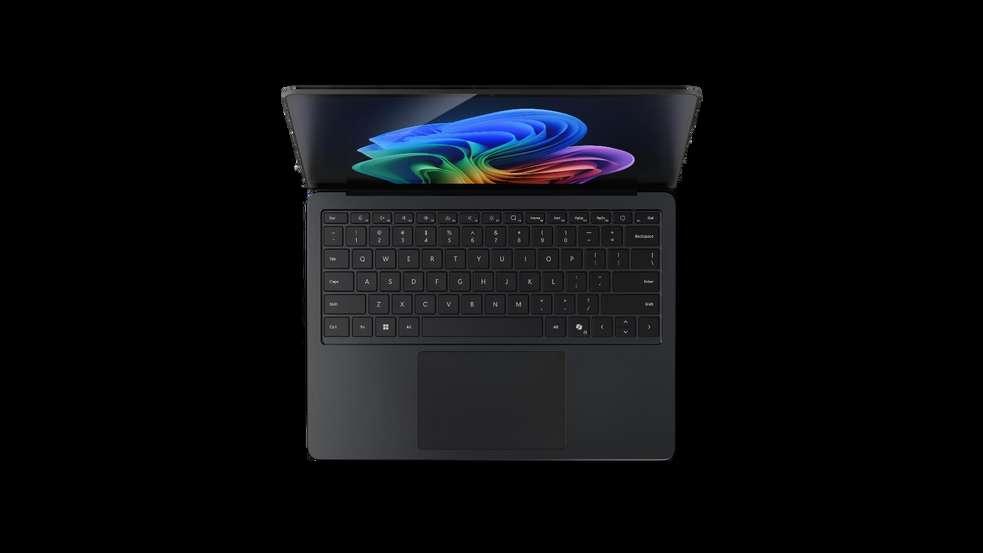
Snapdragon®X Elite and Plus processors unlock new levels of speed and efficiency with an industry-leading NPU that drives up to 45 TOPS for seamless on-device AI.
Transformative design packed with intelligent power
Embrace opportunity with Copilot+ PC performance in a newly sleek profile with a smaller footprint and larger screen real estate.


Du-Huawei renew partnership to accelerate Emiratisation, digital talent development in UAE
HIGHLIGHTS
Reimagining distribution: AI drives dawn of autonomous, intelligent supply chains, says Mario M. Veljovic, General Manager of VAD Technologies
Redington reinspire 2025 celebrates a quarter century of impact in MEA ISSUE 328 // JUNE / JULY 2025


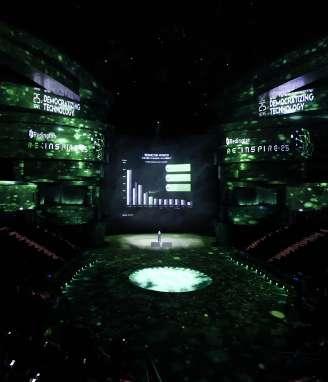
Vendor-distributor partnerships rewrite channel playbook, says Sakkeer Hussain, Director – Sales & Marketing at D-Link Middle East and Africa.

In an era defined by digital acceleration, supply chain volatility, and shifting customer expectations, the Middle East and North Africa (MENA) region is stepping into a new chapter—one where vendor–distributor partnerships are no longer transactional but transformational. This combined June–July issue of Reseller Middle East dives into how intelligent collaboration is reshaping the very foundation of the channel ecosystem. Across the region, we are witnessing a marked departure from the traditional fulfilment-led distribution model. Instead, vendors and distributors are aligning more deeply—sharing data, co-innovating solutions, and jointly responding to increasingly complex market demands. MENA’s unique mix of government-driven digital transformation agendas, young and tech-savvy populations, and ambitious national visions—such as the UAE’s Digital Economy Strategy and Saudi Arabia’s Vision 2030—is accelerating the evolution of these partnerships into intelligent, responsive, and future-ready alliances.
Our cover story, Intelligent Alliances, brings this transformation into focus. Featuring exclusive insights from leaders at Citrix, VAD Technologies, D-Link, and HiStone, the piece explores how AI, automation, and data-driven agility are reshaping vendor–distributor dynamics across MENA. Today, distributors are no longer perceived as middlemen but as strategic growth enablers—advising on vertical-specific demand, building customer-ready solutions, integrating cloud platforms, and supporting lifecycle engagement.
E-mail: sandhya.dmello@cpimediagroup.com
Facebook: www.facebook.com/ TahawulTech
Twitter: @TahawulTech
Instagram: @TahawulTech
This shift is also being reflected in major industry milestones. Redington ReInspire 2025, for example, marks not just a 25-year legacy of growth but a renewed commitment to platformled, subscription-driven, and partner-powered success. From Intel and Redington deepening AI alliances, to the launch of Redington’s Software Solutions Group—there is a clear move towards ecosystems that are agile, integrated, and built for long-term impact.
Meanwhile, the news from across the region continues to inspire. From Ericsson inaugurating a new regional HQ in Riyadh to Emirates embracing digital currency through its MoU with Crypto. com, MENA is demonstrating its readiness to lead in the global innovation economy. Strategic moves like Hisense exporting from Algeria, and Kazakhstan launching its national supercomputer with Presight, underscore the importance of regional collaboration and technological sovereignty.
As this edition shows, MENA is not merely adapting to global trends—it is actively setting the pace. Intelligent vendor–distributor partnerships are becoming the backbone of digital transformation in the region, enabling scale, speed, and sustainability. And as the industry continues to move forward, Reseller Middle East remains committed to chronicling the voices, ideas, and innovations that are shaping the future of the channel.
We hope this issue not only informs but inspires.
Syed kausar.syed@cpimediagroup.com
Partnership aims to equip du employees with advanced skills, focusing on Emiratisation and talent development in key technologies like AI, Data Analytics, 5G, and Cloud.
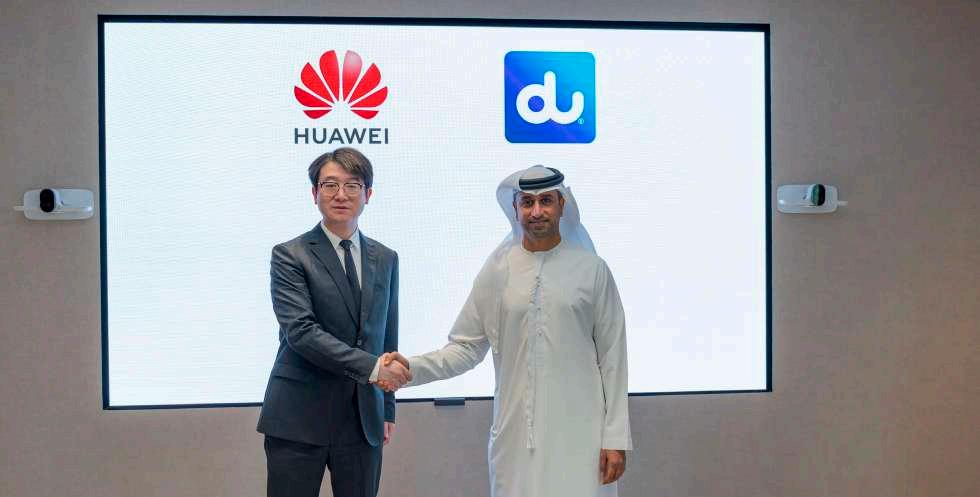
du, the leading telecom and digital services provider, has renewed its strategic partnership with Huawei to enhance Emiratisation by empowering UAE talent with advanced technological skills. Together, the two industry leaders aim to foster innovation and readiness in the digital and telecommunications space, building toward a sustainable future and further solidifying du’s position as a leading telecom and digital service provider.
Building on a historical partnership grounded in ICT technologies and network development, du and Huawei will focus on equipping du employees, including emerging leaders, with critical competencies in cutting-edge technologies. Training and workshops will target future-forward areas such as AI, data analytics, 5G, and cloud solutions, ensuring alignment with du’s digital transformation goals.
Fahad Al Hassawi, Chief Executive Officer at du said: “Huawei and du share a commitment to supporting the UAE’s national Emiratisation strategy,
and we are proud to build on this longstanding relationship. Through this renewed partnership, we will nurture a competitive and future-ready talent pipeline empowered by world-class digital skills while continuously driving technological excellence within our company and across the region.”
As part of this renewed collaboration, du and Huawei will implement activities under the scope of the Joint Annual Training Plan (ATP), including Specialist Programs, Executive Leadership Programs, and emerging ICT knowledge-sharing webinars. Programs like these will be instrumental in enhancing skills across all employee levels, fostering innovation and creating agile responses to increasingly complex challenges.
David Tao, Chief Executive Officer at Huawei UAE said: “We are honored to work closely with du to promote Emiratisation and help shape the future of digital innovation in the UAE. Through tailored training programs and skills development workshops,
our partnership will empower du employees to master cutting-edge technologies in Artificial Intelligence (AI), Data Analytics, and beyond, contributing to the UAE’s advancedtech ecosystem.”
Since 2021, key initiatives such as the Huawei Internship Development Program have provided graduate trainees with foundational knowledge in transformative technologies like 5G and Cloud. In line with the strategic ICT Talent Development Programs initiated in 2022, the renewed partnership reflects a shared vision to attract, retain, and grow UAE talent—all essential components of du’s Emiratisation goals, digital transformation efforts, and overall growth trajectory.
Looking ahead, du and Huawei reaffirm their commitment to cultivating technological expertise necessary for shaping the telecom services of the future—while advancing the UAE’s vision of becoming a globally competitive hub for innovation.
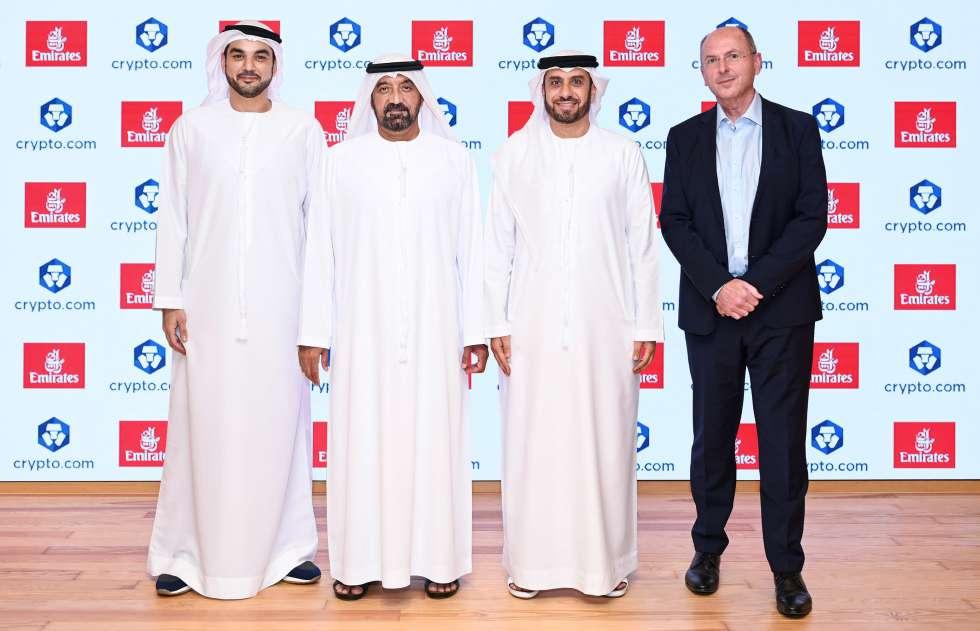
Emirates has signed a Memorandum of Understanding (MoU) with Crypto.com to explore ways to integrate Crypto.com Pay within its payments systems, while maintaining the highest security and compliance standards. Integration is expected to take effect next year.
The MoU was signed in the presence of His Highness Sheikh Ahmed bin Saeed Al Maktoum, Chairman and Chief Executive, Emirates Airline & Group and Michael Doersam, Emirates’ Chief Financial & Group Services Officer, by Adnan Kazim, Emirates’ Deputy President and Chief Commercial Officer, and Mohammed Al Hakim, President of Crypto.com’s UAE operations.
Adnan Kazim said: “Partnering with Crypto.com to integrate cryptocurrency into our digital
payments system reflects Emirates’ commitment to meeting evolving customer preferences, in addition to tapping into younger, tech-savvy customer segments who prefer digital currencies. This strategic move is in line with Dubai’s vision to be at the forefront of financial innovation while at the same time providing our customers with greater flexibility and choice in how they transact with Emirates.”
In addition to exploring Crypto. com Pay integration, Emirates and Crypto.com will explore leveraging promotional marketing campaigns to create awareness and encourage adoption of this new payment solution.
“We’re delighted to complete the signing of this important MoU with Emirates Airline. As we continue to expand the everyday use case for
crypto, integration with exceptional partners such as Emirates will bring real momentum to the digital asset industry and enable both companies to offer genuine innovative finance solutions for our customers. We look forward to working together as we continue to build our crypto offering in the GCC”, said Eric Anziani, President and COO, Crypto.com.
The airline’s latest partnership comes as Dubai positions itself as a global cryptocurrency hub, supported by a robust ecosystem and a sophisticated regulatory framework designed to foster innovation while ensuring investor protection and financial stability. A number of Dubai companies are already accepting cryptocurrency as a form of purchase from real estate developers to major telecoms.
Ericsson (NASDAQ: ERIC) has inaugurated its new regional headquarters in Riyadh, Kingdom of Saudi Arabia (KSA). The new headquarters reflects Ericsson’s strong commitment to the Kingdom and the strategic role of the country in the company’s regional operations across the Middle East and Africa.
The ceremony was attended by His Excellency Eng. Haytham AlOhali, Vice Minister at Ministry of Communications and Information Technology; His Excellency Dr. Abdullah A. Aldubaikhi, Assistant Minister of the Ministry of Investment of Saudi Arabia (MISA); Her Excellency Petra Menander, Swedish Ambassador to Saudi Arabia; Börje Ekholm, President and Chief Executive Officer of Ericsson Group; and Patrick Johansson, President of Europe, Middle East and Africa at Ericsson in addition to other Ericsson leadership team members. Also present were Eng. Olayan bin Mohammed Alwetaid,
Chief Executive Officer of stc Group, and Eng. Nezar H. Banabeela, Chief Executive Officer of Mobily.
The event featured discussions around the evolution of network technologies, the roadmap to 6G, and the impact of Vision 2030 on shaping long-term innovation strategies. With a strong focus on collaboration, talent development, and 5G leadership, Ericsson emphasised on the importance of cross-sector engagement and technological advancement in building an inclusive digital infrastructure for Saudi Arabia and the wider region.
His Excellency Dr. Abdullah A. Aldubaikhi, Assistant Minister of the Ministry of Investment of Saudi Arabia (MISA), said, “The establishment of Ericsson’s regional headquarters in Riyadh reinforces Saudi Arabia’s position as a leading destination for global investment in advanced technologies. It also aligns with our national ambition to build a dynamic digital economy and foster innovation-
led growth. We look forward to continued collaboration with global partners like Ericsson to unlock new opportunities and enable sustainable, technology-driven development across the region.”
Saudi Arabia continues to play a central role in Ericsson’s regional strategy. The company has contributed to the development of the Kingdom’s telecommunications sector by expanding mobile infrastructure, supporting the adoption of 5G, and enabling digital transformation.
Patrick Johansson, President of Ericsson Europe, Middle East and Africa, says: “The establishment of our new Middle East and Africa regional headquarters in Riyadh strengthens our presence in the region. This is a pivotal step in our journey to support digital growth, innovation, and collaboration. The new headquarters will also enable us to further deepen our close partnerships with customers and partners, accelerate the adoption
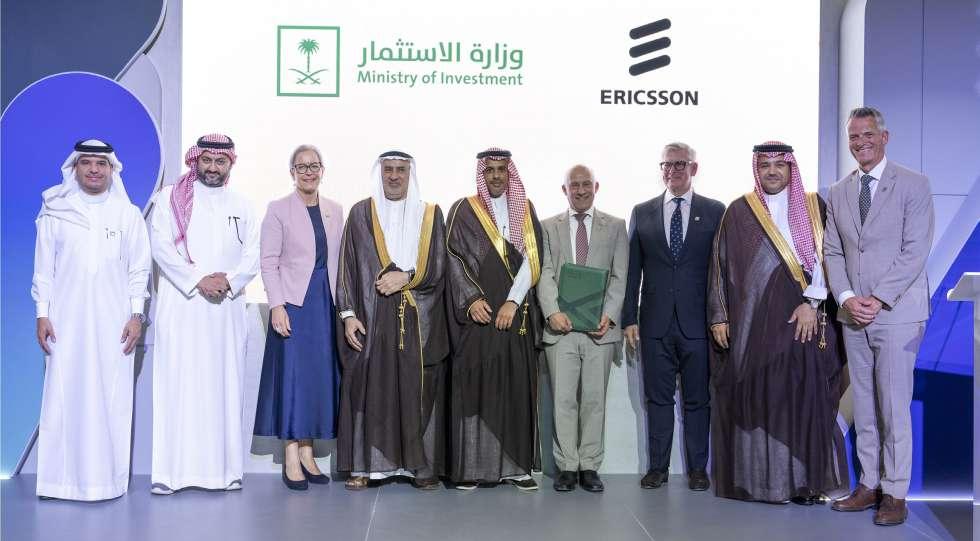
of advanced technologies, and build a more connected future.”
Ericsson’s Gen-E Graduate Program has been hosted at the 5G Innovation Hub in Riyadh since 2018, professionally developing over 190 Saudi graduates from leading national and international universities, with women making up 50 percent of the cohort. The program provides comprehensive training on Ericsson’s technologies, tools, and methodologies, including technical workshops led by Ericsson’s experts and the Ericsson KSA leadership team. Since its launch, it has contributed to the development of diverse 5G and Internet of Things (IoT) use cases across multiple sectors like robotics, 5G edge computing, and mixed reality monitoring and control,
supporting Saudi Arabia’s innovation and digital transformation efforts.
Over the years, Ericsson has closely partnered with stc, Mobily, Zain KSA, King Abdullah University of Science and Technology (KAUST), and King Abdulaziz City for Science and Technology (KACST) on initiatives focused on research, innovation, and the development of advanced connectivity solutions.
Ericsson and King Abdulaziz City for Science and Technology have partnered in 2024 to establish a joint advanced connectivity lab for gaming and beyond at King Abdulaziz City for Science and Technology premises, named “Blink Lab”. The lab will feature a private 5G network and serve as a testbed for training,
research, product development and commercialization of innovative gaming solutions from global and local ecosystems.
Another R&D collaboration in Saudi Arabia is between Ericsson and KAUST to propel 5G and 6G in the Kingdom. The partnership aims to continue fostering scientific findings and developing talent in line with Saudi Arabia’s Vision 2030, further contributing to the Kingdom’s Information and Communications Technology sector growth.
These efforts support the objectives of Saudi Arabia’s Vision 2030 by strengthening the Kingdom’s digital ecosystem and accelerating the adoption of new technologies across various sectors.
Vehere, a new-age cyber defense software company, has engaged Gulf Software Distribution (GSD), a valueadded distributor of software products, to strengthen its presence across the region. As part of the partnership, GSD will distribute Vehere’s Network Detection & Response (NDR) products in the UAE, Qatar, Saudi Arabia, Bahrain, Oman, Kuwait, and Levant.
Vehere’s AI-powered NDR platform will provide regional organisations with an advanced second line of defense, empowering security teams to detect and stop attacks at their earliest stage, before they escalate into breaches. By leveraging lossless packet
• GSD will distribute Vehere’s Network Detection & Response products across the Gulf region and Levant
• The collaboration further positions Vehere to deliver advanced cybersecurity and intelligence solutions to government and enterprise clients in the region

capture, deep packet inspection, and real-time behavioral analytics across both encrypted and unencrypted traffic, the platform delivers enhanced visibility and scalability across the network. Its modular architecture enables organisations to deploy rapid threat hunting, comprehensive forensic analysis, and one-click investigation workflows.
Additionally, through intelligent integration with SIEM, EDR, XDR, SOAR, and TIP systems, Vehere’s NDR accelerates mean-time-to-detection and response, automates containment of
ransomware, APTs, lateral movement, and insider threats, and enriches alerts with contextual intelligence for streamlined SOC operations.
With over a decade of experience in leveraging AI cyber network intelligence to support counterterrorism efforts of nations, Vehere protects critical infrastructure for Fortune 500 companies, telecom providers, financial institutions, and smart cities worldwide. The company is actively expanding its footprint as part of its broader growth strategy in the Middle East.
The collaboration with GSD marks a significant milestone in Vehere’s efforts to achieve a lasting impact in the industry. The move will make the company even better positioned to deliver advanced cybersecurity and intelligence solutions to government and enterprise clients in the region, enabling it to attract more resellers and integrators while supporting demand generation.
Avinash Garg, Vice President of Sales (MEA) at Vehere, said, “This partnership represents a strategic leap in expanding our presence across the region. It enables local enterprises and government organisations to strengthen their cybersecurity posture with access to our battletested NDR technology -- originally developed to meet the rigorous demands of top-tier defense and intelligence agencies.”
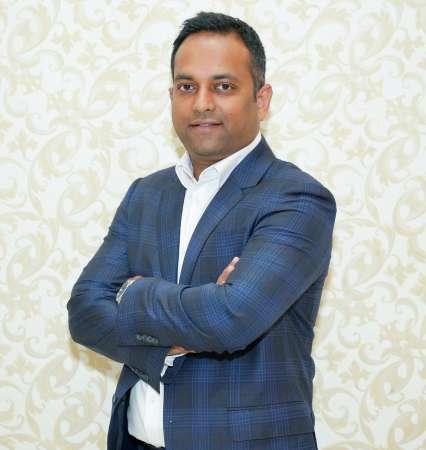
The partnership comes at a time when the value of the global NDR market is projected to reach a compound annual growth rate (CAGR) of 14.1% between 2024 and 2028,
according to the Worldwide Network Detection and Response Forecast by International Data Corporation (IDC). The EMEA region alone is expected to see a 12.6% growth, highlighting strong regional demand. The collaboration with Vehere will unlock new opportunities for GSD’s channel ecosystem to tap into the thriving NDR market.
Veerendra Kolla, Head of Channel Sales at GSD, said, “Cyber threats are growing in intensity and sophistication, and middle east organisations are increasingly prioritising greater visibility and proactive protection across their networks. We found Vehere’s technology to be exceptionally well-suited to meet these demands. Its powerful threat detection capabilities and deep network insights truly impressed us -- making this partnership a strategic step in delivering cutting-edge cybersecurity to the region."
American University of Sharjah (AUS) has entered into a Memorandum of Agreement (MOA) with Ghaf Labs–FZCO, a Dubai-based blockchain advisory and consultancy firm, paving the way for students to gain hands-on experience in emerging technologies. The collaboration will provide AUS students with greater access to internships, research initiatives, industry field visits, and expert-led knowledge-sharing opportunities, strengthening their readiness for careers in the rapidly evolving tech landscape.
The agreement was signed under the AUS Engineering Al Nukhba Program, which establishes industry collaborations in research, development, training programs, internships, exchange of information and personnel, joint supervision of students’ capstone projects and field trip visits.
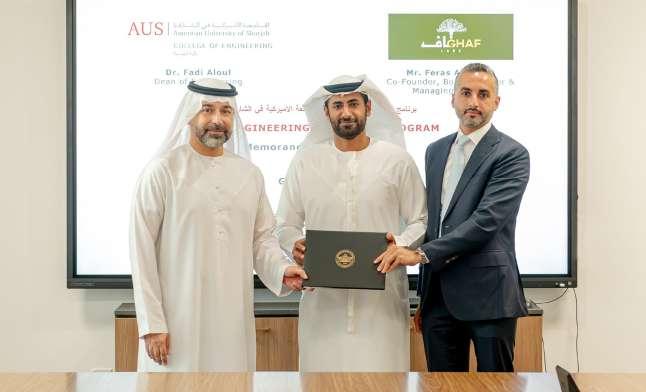
Dr. Fadi Aloul, Dean of the AUS College of Engineering, said, “This collaboration with Ghaf Labs opens valuable pathways for our students to
interact directly with the frontiers of digital innovation. We are very excited about this collaboration because it involves Web3, blockchain, AI and
advanced technologies—areas we have strategically embedded into all 24 of our programs under CEN 2.0 major curriculum revamp. By engaging with professionals in these emerging sectors, our students will enhance their technical competencies and gain insights into real-world applications that complement their academic training.”
Under the agreement, Ghaf Labs will offer internship opportunities that align with students’ academic and professional goals. The collaboration also includes joint supervision of selected capstone and research projects whenever feasible, cooperation on research and development initiatives,
expert-led sessions and organised visits to industry settings.
“At Ghaf Labs, we believe that shaping the future of technology starts with empowering the next generation. Partnering with AUS allows us to co-create a space where innovation meets education. This collaboration reflects our commitment to cultivating regional talent in blockchain, Web3, and AI. By mentoring students through real-world projects, we’re building not just careers—but a thriving safe digital economy,” said Feras Al Sadek, CoFounder, Board Member and Managing Partner at Ghaf Labs.
Ghaf Labs specialises in management
consulting, marketing research and consulting, and Distributed Ledger Technology services. They also offer IT consulting for industries involved in Web3, blockchain, the metaverse and other digital asset sectors.
This partnership is part of the College of Engineering’s broader mission to foster meaningful engagement between academia and industry. Through initiatives like the Al Nukhba Program, the college continues to provide students with access to cutting-edge technologies, real-world challenges and professional networks that prepare them to lead in a rapidly evolving global workforce.
Hefring Marine has announced the launch of its new mobile application designed specifically for marine professionals seeking enhanced fleet management capabilities. The app will provide unprecedented real-time insights and control over vessel operations, enabling users to improve safety, efficiency, and performance across their entire fleet.
The new application addresses the critical needs of marine operators by delivering powerful monitoring and control features through an intuitive mobile interface. Users can now maintain constant connectivity with their vessels regardless of location, ensuring optimal operational oversight and rapid response capabilities.
“We’ve designed this solution to give IMAS users and marine professionals the real-time visibility and control they need to operate more safely and efficiently in today’s demanding maritime environment,” said Karl, CEO of Hefring Marine.
The Hefring Marine app offers four core feature sets that transform how marine professionals manage their operations:
Real-time fleet tracking: The

application’s interactive mapping system provides live positioning data for entire fleets, giving operators complete situational awareness and control over vessel movements and locations.
Intelligent alert system: Users receive instant notifications for critical events including geofence violations, custom threshold breaches, and engine
alerts, enabling immediate response to potential issues before they escalate.
Comprehensive data profiles: Detailed vessel and trip profiles provide operators with complete operational histories and key performance data, supporting informed decision-making and operational optimization.
Device monitoring: The app tracks and monitors all connected onboard devices across each vessel, delivering a complete operational picture and ensuring all systems are functioning properly.
The app is designed to serve marine operations of all sizes, from small vessel operators to large commercial fleets. The scalable architecture ensures that whether managing a handful of boats or hundreds of vessels, users receive the same level of comprehensive monitoring and control capabilities.
The Hefring Marine app is now available for download and immediate use by marine professionals worldwide. The application supports both iOS and Android platforms, ensuring broad accessibility across different mobile devices and operating systems.
Hytera Communications, a leading global provider of professional communications technologies and solutions, has secured a multi-milliondollar strategic contract with UAE-based Al Wafa Technical Systems Services (WAFA), the nation’s foremost telecom system integrator. This high-impact agreement marks a major step forward in revolutionising mission-critical communications within the UAE’s energy sector.
The agreement establishes WAFA as Hytera’s significant communications partner for energy projects across the United Arab Emirates. Hytera will deliver a comprehensive suite of next-generation technologies including ATEX-certified intrinsically safe radios, TETRA and LTE base stations, dispatch systems, and integrated communication platforms. These solutions are engineered to meet the rigorous demands of oil and gas operations, ensuring seamless connectivity in hazardous and remote environments.
“This partnership with Hytera marks a significant milestone in our mission to integrate innovative communication technologies into the UAE’s energy infrastructure,” said Shefeek Muhammed
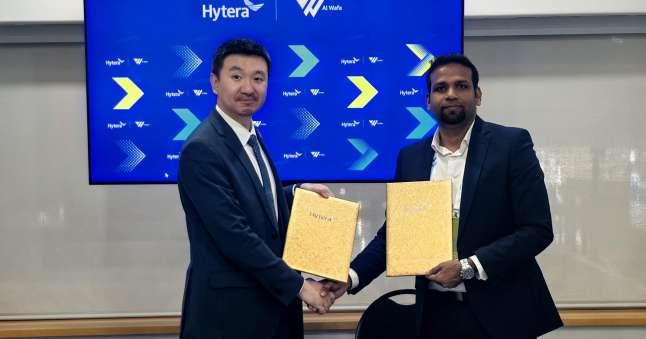
Haneefa, General Manager of WAFA. “Their proven expertise in critical communications will empower our clients with reliable real-time connectivity, enhancing both productivity and safety. We look forward to a long-term collaboration that drives technological advancement in the region.”
Stanley Song, Vice President of Hytera, highlighted the contract’s strategic importance: “This initiative reinforces our decade-long commitment to energy modernisation in the Middle East. By combining AI-driven spectrum management with our advanced dual-
mode base station technology, we are redefining the standards of industrial communication. Through this partnership with WAFA, we expect to deliver transformative impact across the UAE’s oil and gas infrastructure.”
Hytera continues to expand its presence in the Middle East by delivering tailormade communication solutions for energy, public safety and transportation sectors. With a focus on localised partnerships and cutting-edge R&D, Hytera is driving digital transformation and strengthening operational resilience for some of the region’s most critical industries.
Hisense has marked a key milestone in its Middle East and North Africa growth strategy with the launch of its first large-scale export operation from its Algeria factory, developed in collaboration with Condor Group. Over 5,000 locally manufactured Hisense televisions and washing machines have now been shipped to strategic regional markets including Egypt and Tunisia. The export operation was officially inaugurated in the presence of His Excellency Mr. Kamel Rezig, Minister of Trade and Export Promotion of the People's Democratic Republic of Algeria, alongside institutional

Kamel Rezig, Minister of Trade and Export Promotion of Algeria, inaugurated the export operation in the presence of institutional representatives, industry partners, and media.
representatives, industry partners, and media.
This achievement is part of Hisense’s broader commitment to strengthening its regional manufacturing footprint and enhancing supply chain efficiency. The company aims to exceed 65,000 exported TV units to Egypt by the end of 2025, expanding the range to include models from 32 to 75 inches.
In addition to the Algeria facility, Hisense has recently expanded its presence with several key investments across the region, including the launch
of a state-of-the-art R&D Center in Dubai, a TV production facility in Egypt, and an air conditioning factory also based in Bordj Bou Arreridj, Algeria. These strategic moves further enhance the brand’s ability to deliver locally tailored, high-quality smart home solutions to consumers across the MENA region.
Jason Ou, President of Hisense Middle East & Africa, said: "Our vision is to create a robust regional infrastructure that brings innovation, efficiency, and convenience closer to
our consumers. With the expansion of our factory operations and the addition of localised R&D capabilities, we are positioned to offer smarter, faster, and more tailored product solutions for households across the region."
This milestone highlights Hisense’s long-term commitment to building local industrial capabilities, promoting regional exports, and driving innovation across its portfolio of AIpowered consumer electronics and home appliances.
In a landmark step toward digital transformation and technological sovereignty, the Republic of Kazakhstan has officially launched its first national supercomputer. The unveiling ceremony, attended by His Excellency President Kassym-Jomart Tokayev, senior government officials, and global technology leaders, marks a pivotal moment in the country’s innovation journey.
Developed by the Ministry of Digital Development, Innovation and Aerospace Industry in strategic collaboration with Presight, the supercomputer will serve as a cornerstone for Kazakhstan’s AI ecosystem, enabling advanced research, large-scale model training, and secure data infrastructure.
The supercomputer will accelerate Kazakhstan’s role as a regional hub for AI and cloud computing, fostering cross-border collaboration across Central Asia, the Middle East, and beyond. It also reinforces the country’s commitment to data sovereignty and scientific excellence.
Magzhan Kenesbai, Chief Growth Officer, and Maxat Koshumbayev, Country Manager for Kazakhstan, represented Presight at the launch ceremony. While presenting to President Tokayev, Kenesbai emphasised Kazakhstan’s readiness to lead in AI development:
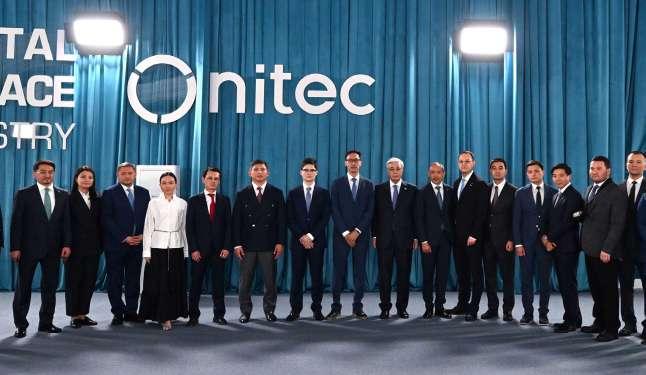
Kazakhstan takes a bold leap in digital transformation with the launch of its first national supercomputer, unveiled in the presence of President Kassym-Jomart Tokayev and global tech leaders.
Kazakhstan’s first national supercomputer will power largescale AI innovation, national data security and digital transformation
- The project was developed by the Ministry of Digital Development in strategic partnership with Presight, part of UAE-based G42
- The supercomputer will enable advanced research, AI model training and cross-border cooperation across the CA region
- Presight expands long-term presence in Kazakhstan through major national infrastructure and smart city initiatives.
“Kazakhstan has all the foundational elements to emerge as a global leader in artificial intelligence, and Presight fully supports President Tokayev’s bold vision for digital transformation. This journey is being shaped through close collaboration between the government, local stakeholders, and international partners—advancing critical areas such as energy infrastructure, data centers and compute capacity, chip imports, talent development, and frontier AI models. The launch of the national supercomputer is a key milestone in a broader, strategic agenda to build a digitally empowered
nation. Presight is proud to stand alongside Kazakhstan as a trusted partner in this nation-building effort,” said Kenesbai.
He also briefed President Tokayev on Presight’s latest global initiatives, provided insight on the Stargate UAE
project and UAE-US AI Campus, and shared updates on the implementation status of the Astana Smart City project (in partnership with the Akimat), which is currently underway with the construction of a data center, a command center at Alem.AI, and the
deployment of the AI analytics system. The project features over 60% local suppliers, and Presight Kazakhstan now employs more than 50 specialists, supporting technology transfer, local expertise, and long-term in-country value.
The new facility in Oxfordshire delivers training, advisory, and real-world demonstrations to help EMEA manufacturers and logistics firms harness the power of machine vision, 3D, and AI technologies.
Zebra Technologies Corporation, a global leader in digitising and automating frontline workflows, has joined forces with Clearview, a Zebra industrial automation distributor, to unveil a new Industrial Automation Centre of Excellence in Oxfordshire, United Kingdom.
Located in one of the UK’s most dynamic innovation corridors, the centre is designed to serve as a resource hub for machine builders, systems integrators, and end users in manufacturing and logistics across the EMEA region. It offers hands-on training, tailored advisory services, and real-world demonstrations to accelerate the adoption of machine vision, 3D, and AI technologies.
Donato Montanari, Vice President and General Manager, Machine Vision, Zebra Technologies, said: “Automotive, electric battery, electronics and semiconductor
manufacturers and logistics organisations face new quality, compliance and safety challenges, requiring frontline engineers, machine builders and systems integrators to think and act in new ways. A professional network is essential to help industry stakeholders explore how technologies like AI and 3D can work in tandem to meet operational goals and support futureready growth.”
According to Zebra’s Manufacturing Vision Study, 54% of European manufacturers expect AI to drive growth by 2029, yet 84% admit struggling to keep pace with emerging technologies. Real-time visibility, data integration, compliance with new standards, and traceability are key quality management concerns.
The centre will deliver a range of training programmes—from fundamentals to advanced
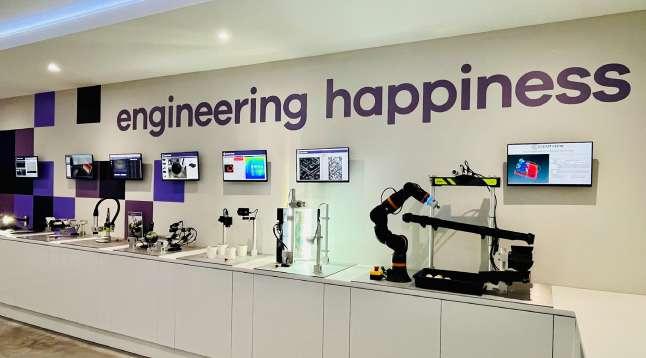
application-specific modules— aimed at upskilling workforces and preparing them to navigate technological transformation. Nearly three-quarters of manufacturing leaders plan to reskill employees to better use data and digital tools, highlighting the centre’s strategic importance.
A standout feature is the opportunity for Zebra customers to bring their machine vision proof-ofconcept applications for evaluation. These will be assessed by independent experts who will provide feasibility reports and recommendations, ensuring organisations gain tangible value and direction.
The facility will also act as a networking platform, hosting thought leadership events and knowledgesharing forums to foster collaboration among solution providers and industry stakeholders.
“This is an important step forward for the machine vision industry and the customers we support, bridging the gap between the technology and user knowledge,” said Allan Anderson, Managing Director and Founder, Clearview. “With our certified professionals, engineering expertise, and commitment to democratising machine vision, we’re excited to help customers build powerful vision systems.”
The Industrial Automation Centre of Excellence is now open and ready to welcome organisations across EMEA seeking to drive innovation and operational excellence.
Facilio’s cloud-based solution empowers the global meal-kit leader with centralised, automated refrigeration compliance across U.S. operations

HelloFresh, the world’s leading meal-kit provider, has partnered with Facilio to automate and centralise refrigeration compliance across its industrial facilities in the United States. The implementation of Facilio’s Connected Refrigeration platform represents a critical step forward in HelloFresh’s efforts to improve operational efficiency, ensure regulatory adherence, and drive sustainability outcomes.
The company, which operates under popular brands such as Factor, Green Chef, and EveryPlate, encountered increasing complexity in managing
refrigerant compliance amid evolving Environmental Protection Agency (EPA) regulations. Seeking a scalable, transparent, and proactive approach, HelloFresh deployed Facilio’s Connected Retail platform to digitise and unify compliance operations across multiple sites.
Facilio’s Connected Refrigeration module offers automated alerts for leak repairs, real-time dashboards tailored to specific teams, and persona-based views that support compliance, operations, and sustainability teams. The system also enables precise tracking of Scope 1 CO₂ emissions, reinforcing HelloFresh’s emissions reduction goals. With preconfigured AR4, AR5, and 20-year GWP values for each refrigerant type, the platform simplifies accurate and auditable emissions reporting.
“Facilio helped us move from manual spreadsheet-based processes to a modern, centralised platform that delivers visibility, automation, and control across our refrigeration compliance workflows,” said Jeffrey Yorzyk, Senior Director of Sustainability at HelloFresh NA. “Its ease of use, builtin regulatory compliance, and robust reporting made it the ideal choice.”
Prabhu Ramachandran, CEO of Facilio, added: “HelloFresh’s decision to adopt our Connected Refrigeration solution reflects the growing need for intuitive, compliance-driven systems in food operations. Facilio provides full visibility and actionable insights across all sites—helping brands like HelloFresh remain EPA-ready while building a future-proof operational foundation.” Facilio’s Connected Refrigeration solution for HelloFresh includes:
• Centralised refrigeration tracking across all sites
• Automated workflows for leak inspections, repair deadlines, and compliance tasks
• Instant action triggers that reduce lag between detection and resolution
• Persona-specific dashboards tailored to team roles
• Streamlined task execution and faster closure of events
• Integration with internal systems such as work order platforms Part of Facilio’s broader Connected Retail Platform, the solution combines CMMS, remote monitoring, and refrigeration compliance into a unified system. Designed for retailers, grocers, and QSR/meal-kit providers, it enables operations teams to reduce energy waste, automate maintenance, and remain audit-ready at scale. Facilio also offers managed services including helpdesk support, alarm triaging, utility management, and work order execution—all powered by its IoT-led infrastructure.


Industry leaders from Citrix, VAD Technologies, HiStone, and D-Link share how strategic collaboration, data intelligence, and value-added ecosystems are reshaping go-to-market success.

The vendor–distributor relationship is undergoing a fundamental reset to meet the demands of a fast-changing technology environment. Where partnerships once focused on fulfilment and transactional efficiency, the emphasis has now shifted to agility, co-innovation, and digital maturity.
Market volatility, global supply chain constraints, and the acceleration of cloud and AI technologies are prompting vendors and distributors to rethink their engagement models. Rather than operating in silos, both sides are co-creating value by integrating operations, sharing insights, and aligning on customer outcomes.
Distributors are no longer viewed merely as logistics partners but their role is expanding into areas like demand forecasting, platform integration, solution bundling, and lifecycle support. The vendors are re-engineering go-to-market strategies to enable subscription models, cloud marketplaces, and verticalspecific offerings—opening doors for
distributors to play a consultative and strategic role.
Customer expectations are also pushing the boundaries of traditional engagement. Buyers demand personalised, scalable solutions that are delivered faster, supported locally, and refined through real-time data. Vendor–distributor ecosystems that prioritise transparency, adaptability, and end-to-end visibility are better positioned to deliver on these expectations.
Success in this new channel environment hinges on intelligent partnerships—built not just to respond to today’s complexity, but to lead in tomorrow’s digital economy.
Middle East and North Africa’s distribution ecosystem is being reshaped by a wave of data-driven, AI-enabled collaboration. Traditional vendor–distributor models are giving way to intelligent partnerships focused on value creation, agility, and sustained innovation.
Insights from leaders at Citrix, VAD Technologies, HiStone, and D-Link reveal a strategic shift where go-tomarket success depends on deeper
integration, smarter planning, and ecosystem-wide transparency. Rather than focusing solely on product movement, today’s alliances are built around shared growth, responsiveness to disruption, and digital fluency across every layer of the supply chain.
IDC projects the Middle East and Africa’s IT distribution market will touch $16.6 billion by 2026, driven by an increasing need for cloud-enabled, AI-powered, and service-oriented offerings.
Technology leaders across the region are no longer competing on speed alone. Future success will belong to those who co-create resilient, transparent, and predictive supply ecosystems, where intelligence drives every decision.
A 2024 forecast from Gartner reveals that 65% of global tech vendors will implement AI-led pricing, demand planning, and channel orchestration tools by 2026, up from 23% in 2022, highlighting a steep acceleration toward intelligent operations.
Statista estimates the AI in supply chain market will surge from $7.1 billion in 2023 to over $20 billion

by 2028, with the MENA region positioned among the fastest adopters due to national digital strategies and investment across smart logistics platforms.
MENA industry consensus
Citrix’s Thomas Rizkallah affirms that distributors are no longer intermediaries but integral extensions of the vendor’s core operations. “Our sales engines, partner motions, internal functions, and support resources are heavily intertwined with distributors to ensure transparency, diligent planning, combine resources, and increase solution agility,” he said. “They must be at the centre of everything we do.”
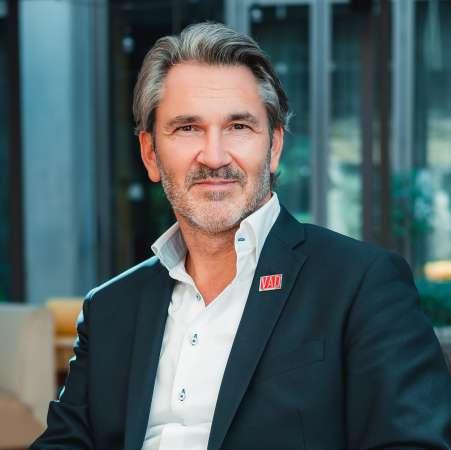
Rizkallah highlights a shift towards bundled solutions over single-layer offerings to address customer demands for innovation over cost. He sees longterm value in transparent planning and solution-centric models, supported by creative mechanisms such as trial software and spare stock provisioning to overcome fulfillment delays.
At VAD Technologies, General Manager Mario M. Veljovic envisions a future where AI empowers distribution to move from product movement to intelligent orchestration. He describes a new paradigm of warehouses that think, fleets that optimise autonomously, and infrastructure that converts data into foresight. “The payoff is higher service levels and working capital savings, achieved through infrastructure that turns raw data into real-time foresight,” he stated.
Veljovic underscores the urgency for distributors to build AI control towers, deploy digital twins, and invest in upskilling. By embedding predictive analytics and ethical AI frameworks, he argues, businesses can transform disruption into differentiation. Echoing this digital-first transformation, Mohamed Berrihi of HiStone explains how their partnerships are becoming more integrated, outcome-driven, and resilient. “We’ve moved away from a purely transactional model to build integrated partner ecosystems,” he said. He identifies AI-powered CRMs, predictive supply chain models, and ESG initiatives as key components of tomorrow’s distribution success.
Berrihi notes that digital maturity and the ability to
DISTRIBUTORS MUST BE AT THE CENTRE OF EVERYTHING WE DO.
manage recurring services are now essential. “Vendors must empower distributors with the tools to manage customer lifecycles, cross-sell intelligently, and offer value in an ‘Everything-as-aService’ environment.”
For Sakkeer Hussain, Director – Sales & Marketing at D-Link Middle East and Africa, collaboration begins with trust and is nurtured through shared tools, agile logistics, and localised inventory. “We view our distributors as true strategic partners,” he explained. “No longer are they just helping us with logistics— they’re helping us go to market more intelligently, quicker, and more in touch with what our local customers need.”
Hussain champions co-creation, innovation workshops, and joint forecasting to stay ahead of disruptions. His approach values the cultural and commercial intelligence of regional partners, ensuring customercentric outcomes across complex and diverse markets.
Together, these leaders define a new era of partnership: one powered by realtime data, shaped by AI and innovation, and built on transparency, flexibility, and mutual growth. As MENA accelerates toward becoming a digital-first region, the success of vendors and distributors alike will hinge on how effectively they can orchestrate these intelligent alliances.

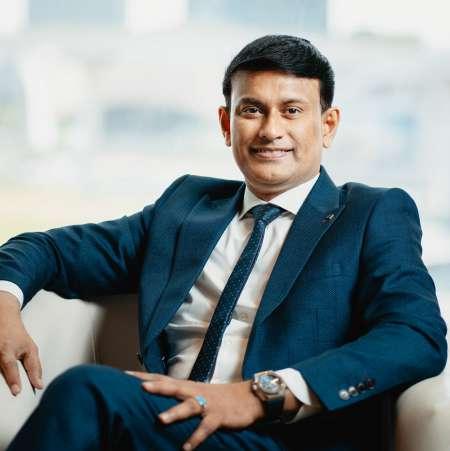
IDC projects the Middle East and Africa’s IT distribution market to reach $16.6 billion by 2026, fuelled by surging demand for cloud-native platforms, cybersecurity solutions, and AI-powered services. Yet this growth is only one layer of a broader digital transformation sweeping across the region’s technology ecosystem.
A deeper look into IDC’s recent findings reveals that digital transformation investments across the Middle East, Türkiye, and Africa (META) are expected to surpass $ 74 billion by 2026, growing at a compound annual rate of 16%— more than double the average ICT growth rate for the same period. These investments are projected to account for over 43% of total ICT spending, signifying a major pivot toward sustainable, tech-driven models.
IDC’s Group Vice President and META Regional Managing Director, Jyoti Lalchandani, explains that organisations which accelerated digital initiatives at the onset of the COVID-19 pandemic are now better positioned to navigate today’s volatile
economic conditions. “The digital and tech investments they made during the pandemic to build resilience could be put to test in 2023 across key business dimensions such as customer experience, operations and financial management,” he said.
Automation will play a central role in this transformation, helping businesses reduce IT operational costs, mitigate labour shortages, and unlock faster innovation cycles.
“No matter what the economy throws at us over the coming 12 months, organisations must not lose sight of their digital aspirations,” Lalchandani warned. The shift from ‘building digital’ to ‘scaling digital’ is now the strategic imperative.
At least 30% of executive focus will shift towards growing innovation and operating truly digital businesses, according to IDC. This means vendor–distributor partnerships must also mature—from fulfilment-focused engagements to innovation-led alliances that prioritise measurable outcomes, agility, and resilience.
The impact is already visible across the region. From Citrix’s solution bundling model to VAD Technologies’ AI orchestration infrastructure, from HiStone’s data-powered ecosystems to D-Link’s co-created market readiness, intelligent alliances are becoming the defining characteristic of regional competitiveness.
As the UAE, Saudi Arabia, and other digitally ambitious nations accelerate their national AI and smart economy visions, distributors will emerge not just as logistics partners, but as enablers of digital business transformation.
The global momentum reinforces this direction. The global digital transformation market is projected to reach $3.95 trillion by 2030, growing at a CAGR of more than 23%, according to Grand View Research. With MENA at the forefront of digital acceleration, the businesses that embrace intelligent alliances today

are poised to lead the connected, data-driven economy of tomorrow.
MENA’s vendor–distributor relationships are evolving into intelligent, data-driven alliances, and global distribution trends offer both validation and forward-looking signals for regional leaders.
According to IDC, North America recorded its second straight quarter of growth in Q1 2025, signalling a rebound in global distribution momentum after post-pandemic market volatility. Vendors and distributors worldwide are pivoting from transactional models to valuecentric orchestration strategies that focus on resilience, visibility, and customer alignment.

Global PC shipments rose 4.9% year-on-year, reaching 63.2 million units in Q1 2025. Canalys reported a slightly higher uptick of 9.4%, driven by early purchasing ahead of expected tariff changes.

IDC forecasts a full-year shipment volume of 274 million units, reflecting a renewed global appetite for endpoint infrastructure, which continues to underpin digital workplace and hybrid learning models.
A 2025 global survey by the International Data Center Association (IDCA) revealed that 87% of companies now consider AI a
top strategic priority, with 76% actively using AI and 69% deploying generative AI across business functions. This shift is dramatically influencing how distributors operate—prompting the rapid adoption of AI-powered pricing engines, demand forecasting, and realtime supply chain visibility tools.
For MENA vendors and distributors, these global trends reinforce the urgency of AI-enabled infrastructure, intelligent fulfilment frameworks, and proactive partner collaboration. Whether it’s Citrix’s focus on bundled hybrid cloud solutions or VAD Technologies’ deployment of AI control towers, the region is increasingly aligned with global best practices— positioning itself not just to catch up, but to lead to prove intelligent alliances are more than a regional strategy—they are a global competitive necessity.
From real-time insights to self-optimising networks, next-gen distribution is shifting from movement to orchestration.
Warehouses that think, fleets that optimise themselves, and data that predicts demand before it arises—this is not science fiction, but the emerging reality of AI-enabled distribution. In this forward-looking interview, Tahawultech engages with Mario M. Veljovic, General Manager of VAD Technologies, to decode how artificial intelligence is fundamentally altering the logistics and distribution landscape. Veljovic outlines how distributors can prepare for this seismic shift—by embracing AI infrastructure, upskilling teams, and embedding ethical frameworks— turning disruption into long-term advantage.
How is AI redefining traditional distribution models, and what are the immediate opportunities and threats for modern distributors?
AI shifts distribution from a linear “push” model to a hyper-responsive, data- driven “pull” ecosystem. With sensors, edge compute, and cloud AI cores embedded across warehouses, trucks, and channels, we can now predict demand, allocate stock, and trigger fulfillment in real time— often before the order is placed. The upside is clear: deeper customer loyalty, higher inventory turns, and margin uplift from value -added analytics services. The risk is
equally stark: those who delay face disintermediation as manufacturers and digital marketplaces move closer to end customers, and talent scarcity may slow transformation. In short, infrastructure -first adopters seize new profit pools; laggards risk irrelevance.
What strategies can distributors adopt to ensure agility and resilience amid rising supply- chain complexity and global disruptions?
Resilience today is engineered, not improvised. First, build a regional AI “control-tower” that ingests live data from ports, suppliers, and logistics partners and runs digital-twin simulations on high-performance compute. Second, push analytics to the edge—placing AI appliances in key warehouses so decisions continue even if cloud links fail. Third, diversify sourcing and logistics lanes, guided by AI risk-scoring that weighs geopolitical, climate, and capacity signals. Finally, adopt modular infrastructure (micro -services, APIs, private 5G) so processes can be re -wired in days, not months, when shocks hit. These moves convert volatility from a threat into a competitive differentiator.
In the era of hyper -personalisation, how can AI- driven insights help distributors better predict customer behaviour and demand patterns?
Granular demand sensing requires
unified data pipelines. By fusing POS feeds, e - commerce clicks, social sentiment, and contract backlog into a regional data lake, deep -learning models capture micro -trends— down to SKU, channel, and even time - of- day. Edge inferencing nodes then translate those insights into automated replenishment and tailored bundle offers. For MENA’s youthful, mobile -first customer base, this means we stock precisely what the market craves, shorten lead times, and minimise returns. The payoff is higher service levels and working capital savings, achieved through infrastructure that turns raw data into real-time foresight.
How are data integration and real - time visibility transforming inventory management and logistics?When a pallet leaves a supplier in North America, every hand - off is now digitally stamped by IoT trackers feeding a common platform. AI algorithms reconcile ERP, WMS, and TMS streams, flagging variances instantly. This 360° visibility slashes blind spots: inventory accuracy can exceed 98 %, cycle counts become continuous, and predictive maintenance keeps fleets rolling. The same stack powers dynamic route optimisation—cutting kilometres, fuel, and carbon while meeting tight SLAs. In effect, data integration converts warehouses and trucks into intelligent, self- optimising assets rather than static cost centres.
What role does AI play in dynamic pricing, and how can distributors balance profitability with market competitiveness?
AI engines hosted on high- density GPU clusters evaluate thousands of price permutations per minute, factoring demand elasticity, landed cost, competitor moves, and real-time FX. Guardrails—floor, ceiling, and approval workflows—ensure outputs align with strategic intent. The result is surgical margin capture during supply constraints and rapid discounting when inventory risks obsolescence. Transparency matters: explainable -AI layers show sales teams why a price changed, preserving trust with customers. Executed well, dynamic
pricing lifts gross profit several points while maintaining the perception of fair value.
How can traditional distribution players upskill their workforce for AI- augmented environments without losing the human touch? Start with data literacy for all: every role, from warehouse lead to credit manager, should grasp basic AI concepts and dashboards. Establish an internal “AI Guild” that pairs subject-matter experts with data scientists to co - create use cases on sandbox infrastructure. Move routine tasks—manual picking, report consolidation—into cobots and RPA so employees can
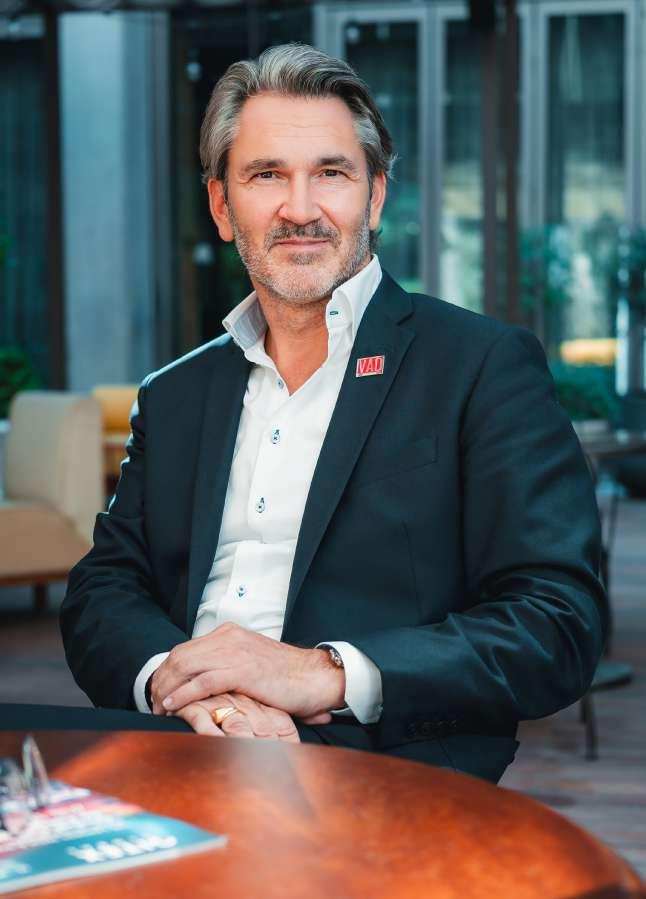
focus on consultative selling and problem-solving. Crucially, keep relationship roles human: empathy, negotiation, and cross- cultural competence remain irreplaceable in MENA’s relationship - driven markets. The formula is simple—AI handles the heavy lifting; people handle the meaning.
What ethical and compliance challenges arise when using AI in distribution, especially around data privacy and decision -making transparency?
Three guardrails are non-negotiable. First, data sovereignty: sensitive trade and customer data must reside in regional, compliance - certified clouds, with clear consent and retention policies. Second, algorithmic transparency: audit trails and explainable -AI layers must show why the system approved a credit limit or routed a high-value shipment through a specific path. Third, bias mitigation: continuous monitoring of training data ensures recommendations do not inadvertently disadvantage certain customer segments or geographies. Embedding an ethics committee at board level reinforces accountability and sustains stakeholder trust.
Looking ahead, what does a fully AI- enabled distribution ecosystem look like, and how can companies prepare today to lead tomorrow?
Picture autonomous, solar-powered desert data centres crunching petabytes of regional supply- chain data; fleets of self- driving, hydrogen trucks orchestrated by edge AI; and micro -fulfilment hubs 3 -D printing spare parts on demand. Deals close via blockchain smart contracts, with pricing, credit, and compliance validated in seconds. MENA is on track to host this future because governments are investing heavily in connectivity, green energy, and AI research. To lead, distributors must act now: consolidate data, modernise networks, adopt modular AI infrastructure, and forge talent pipelines with universities. Those steps transform today’s distributors into tomorrow’s orchestrators of an intelligent, resilient, and sustainable supply chain.
Strategic collaboration, innovation, and digital agility are re defining partnerships across the channel ecosystem.
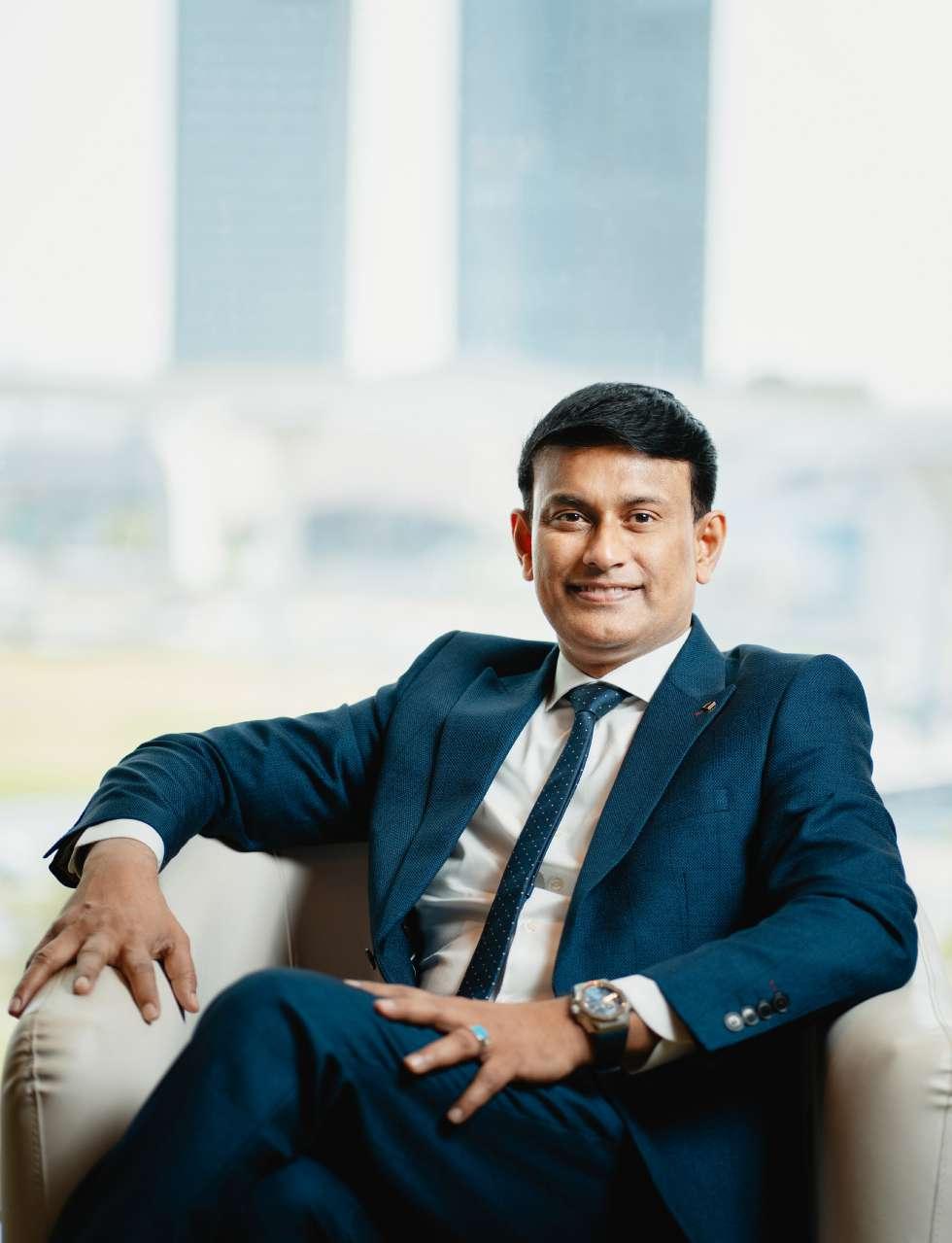
Sakkeer Hussain Director – Sales & Marketing
The vendor-distributor relationship is undergoing a profound transformation in response to today’s fast-evolving technology landscape. No longer confined to traditional logistics or transactional exchanges, these partnerships are now strategic alliances fuelled by shared data, joint innovation, and a relentless focus on customer outcomes. Businesses face ongoing supply chain disruptions, shifting market demands, and rapid digitalisation, vendors and distributors are working hand-inhand to drive growth, resilience, and relevance.
Sakkeer Hussain , Director –Sales & Marketing at D-Link Middle East and Africa speaks to Sandhya D’Mello,Technology Editor, CPI Media Group, about how industry leaders are building stronger, smarter, and more future-proof collaborations.
How has your approach to vendor-distributor collaboration evolved over the last few years, particularly in light of digital transformation and new technology trends?
Our approach to vendor-distributor collaboration has evolved significantly, driven by rapid digital transformation and shifting customer expectations. We’ve moved away from a purely transactional, product-based model to a value-driven, collaborative partnership. We view our distributors as true strategic partners. No longer are they just helping us with logistics—they’re helping us go to market more intelligently, quicker, and more in touch with what our local customers need. We’ve invested in digital technologies that enable us to stay in touch in real time, from common dashboards for inventory forecasting right through to integrated CRM technology that allows us to be more responsive and more ahead of demand. We’ve also stepped-up collaboration when it comes to training and support. With technologies like cloud, cybersecurity, and AI evolving fast, it’s important that everyone—from us
to the reseller on the ground—feels confident selling complete solutions, not just standalone products. Most importantly, we’re focused on outcomes. Customers today want flexible services and value they can see—not just hardware. That’s why we’re building things like bundled offers and subscription-style models together with our partners.
What key factors are driving stronger partnerships between vendors and distributors in today’s rapidly changing market?
In today’s fast-moving tech landscape, vendor-distributor relationships are becoming more strategic and valuefocused than ever.
Here’s what’s driving this shift:
• Digital Transformation Distributors are no longer just moving products—they’re enabling digital growth through cloud platforms, online marketplaces, and subscription-based services.
• Customer-First Approach Businesses want results, not just products. That’s why vendors and distributors are co-creating bundled, industry-ready solutions that solve real-world challenges.
• Resilient & Responsive Logistics
With ongoing global disruptions, flexibility is key. Strong communication and localised inventory planning help both sides stay resilient and responsive.
• Upskilling for Success Knowledge is power. Vendors are investing in partner training, certifications, and tools to help distributors confidently sell complex, next-gen technologies.
• Smart Market Expansion Distributors bring local expertise and trusted networks—making them essential partners for tapping into new regions and verticals.
• Data-Driven, Growth-Focused Partnerships
With real-time data sharing at the core, vendors and distributors can forecast demand, plan more effectively, and respond quickly
to market changes—laying the foundation for agile, trusted relationships built for long-term innovation and customer success.
How are supply chain challenges impacting your relationships with vendors and distributors, and what strategies are you implementing to ensure smooth collaboration?
In recent years, supply chain disruptions—like chip shortages, shipping delays, and global uncertainty—have pushed us to rethink how we work with vendors and distributors. Instead of weakening ties, these challenges have strengthened our collaboration, shifting the focus from efficiency to agility, transparency, and resilience.
We’re now working more closely than ever—sharing data, planning together, and solving problems side by side—to keep stock moving, meet demand, and minimise impact on customers.
To stay ahead, we’ve rolled out a few smart strategies:
• Shared digital tools for forecasting, order tracking, and inventory planning—so everyone sees the same data and can react fast.
• Localised inventory hubs to bring stock closer to key regions and reduce dependence on long routes or single suppliers.
• Flexible procurement models that allow for quick switches in sourcing without sacrificing reliability.
• Joint scenario planning to prepare for “what ifs” before they happen.
• And most importantly, a deeper investment in long-term relationships—because in tough times, trust and teamwork matter more than ever.
In your opinion, what role does innovation play in strengthening vendor-distributor partnerships, and how do you foster a culture of innovation in these collaborations?
Innovation is more than a buzzword— it’s the fuel for growth in vendordistributor relationships. It’s about
co-creating solutions, tackling new customer challenges, and staying ahead of tech trends. It helps us offer unique products, adapt to market changes, and work smarter.
We keep this spirit alive by investing in joint solution-building, running innovation workshops, and rewarding bold steps. We value open communication and learning from trial and error. Ultimately, innovation makes our partnerships agile, valuable, and future-ready.
We nurture a culture of innovation in our partnerships by focusing on a few key initiatives that spark ideas, encourage collaboration, and turn concepts into real solutions.
• Co-creating differentiated solutions
We team up with distributors to build unique offerings—bundling
services, vertical-specific solutions, and go-to-market strategies that help us stand out from the crowd.
• Staying ahead of market shifts
Innovation helps us respond faster to evolving customer demands and tech trends like cloud, managed services, and AI—keeping our solutions fresh, relevant, and competitive.
• Boosting agility through smart processes
By embracing automation, datadriven tools, and streamlined operations, we enable faster decision-making, better forecasting, and a more responsive supply chain.
• Fostering a culture of innovation together From joint solution development
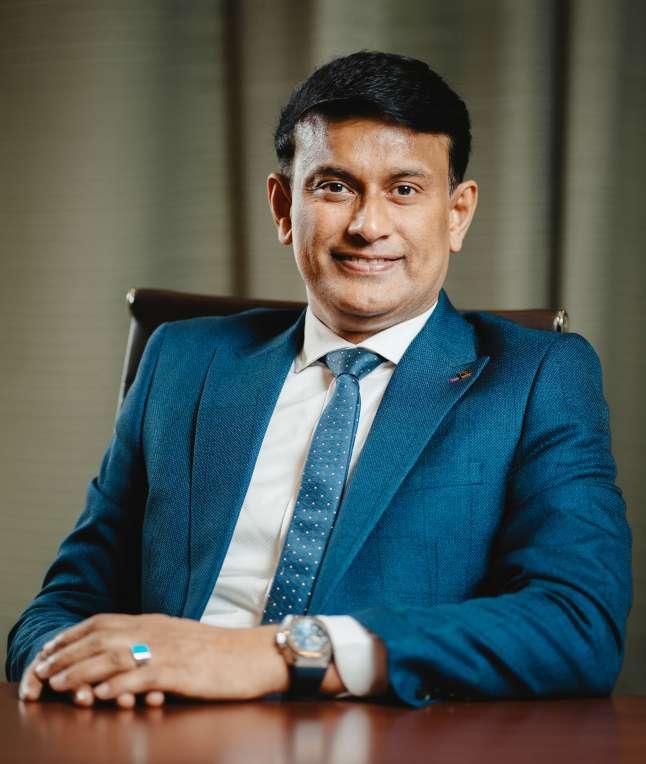
and hackathons to partner incentives and open feedback loops—we create an environment where ideas thrive, risks are shared, and innovation is part of our daily rhythm.
What are the top three priorities for your company when selecting a distributor or vendor in the current business climate, and how do these factors influence your long-term partnership strategies?
In today’s rapidly shifting tech landscape, choosing the right vendor or distributor isn’t just a tactical move— it’s a strategic one. For us, the right partner is someone who brings more than just products to the table.
Here are the three key traits we look for:
We seek partners who are not just digitally enabled but digitally driven. Those who leverage automation, cloud platforms, analytics, and e-commerce tools stand out. Their tech maturity helps us co-create smarter, scalable solutions aligned with where the market is going—not just where it’s been.
A deep understanding of regional dynamics and a proven channel network are critical. We value partners who can localise strategies, tap into new verticals, and help us grow across diverse geographies with confidence and precision.
In a world of constant disruption, we rely on partners who can pivot fast, communicate openly, and deliver consistently. Agility, reliability, and transparency are no longer perks— they’re expectations. At the end of the day, we’re not just looking for suppliers—we’re building future-ready alliances that thrive on shared goals, innovation, and customer-centric outcomes.
RAFFLES DUBAI 22 ND JULY 2025
9:00 AM TO 1:30 PM
Recognising Vision. Celebrating Excellence. Shaping the Future of the Channel.
The Channel Leadership Forum & Awards 2025 is a defining annual celebration of innovation, transformation, and success within the regional channel ecosystem. This prestigious event brings together the most influential figures from across the partner, vendor, and distributor landscape to honour standout achievements and forward-thinking leadership.
Now in its latest edition, the event highlights those who continue to push the boundaries—driving digital acceleration, enhancing customer value, and building next-generation partner models.
From leadership in AI and cloud to excellence in service delivery and partner engagement, this forum provides a platform to connect ideas, celebrate growth, and set the stage for the channel’s future.
Join us for an inspiring day of insights, recognition, and connection.
GOLD SPONSORS

SILVER SPONSOR

HOSTED BY
Thomas Rizkallah sets out a value-added roadmap where data-driven collaboration, solution bundling and realistic supply-chain planning eclipse the old transactional model.
Vendor–distributor alliances across the Middle East and North Africa have entered a new era, shaped by hybrid work patterns, fast-moving start-ups and persistent supply-chain pressures. Thomas Rizkallah, Regional Sales Director – MENA at Citrix, believes success now hinges on tightly woven, value-added ecosystems that blend sales engines, support resources and joint go-to-market plans into a single, transparent workflow. In this conversation he explains how Citrix is re-engineering its channel motion around solution bundling, extended lead-time planning and emerging technologies such as blockchain to deliver greater agility and long-term value for customers and partners alike.
How has your approach to vendor-distributor collaboration evolved over the last few years, particularly in light of digital transformation and new technology trends?
Much of what we do now is focused on evolving the value-added selling motion. For instance, half a decade ago , we treated our distributors as an financial intermediary between us and our traditional partner/system integrator, but today they are a core extension off the native team we have


at Citrix. Our sales engines, partner motions, internal functions and support resources are heavily intertwined with distributors to ensure transparency, diligent planning , combine resources and increase solution agility. They must be at the center of everything we do.
What key factors are driving stronger partnerships between vendors and distributors in today’s rapidly changing market?
I believe today’s accelerated pace in technological innovation is swiftly fast tracking the introduction of new competitors and startups that are starting to entrench on market space that used to be significantly monopolized by traditional players. We have had to reinvent our GTM motions and relook at creative ways to sell our solutions. For example , solution bundling based on a universal ‘ All you can eat ‘ proposition is becoming more relevant to our customers Vs traditional solutions that used to be focused on single layer requirements. We’re essentially telling our channel and end -users, we’ll hand you the best off our entire hybrid technology stack at a fair and lower price Vs what it would have cost you to buy our stack separately. This model encourages end-users to focus more on innovation, adoption, and value creation in comparison to customers focusing on cost reductions all the time.
How are supply chain challenges impacting your relationships with vendors and distributors, and what strategies are you implementing to ensure smooth collaboration?
The key to addressing supply chain challenges is, resetting expectations. 5-10 years ago, the world was fixated and conditioned to fulfill and supply at an average of 4-6 weeks. By ensuring our channel and customers are coached to readjust to new time frames based on an average of 8-10 weeks, we can accommodate realistic milestones that is fair on the entire fulfilment chain. However, in many cases , we have interim solutions that allows us to serve the needs of our customers such as ensuring we have adequate cold spares for hardware stored in our depots or supplying customers unrestricted trial software while they receive their primary licenses.
In your opinion, what role does innovation play in strengthening vendor-distributor partnerships, and how do you foster a culture of innovation in these collaborations?
Innovation is driving improvements in distributor productivity and is helping us streamline our sales/support processes , optimize our operations, and adapt to change swiftly as the market changes. One way to foster a culture of innovation is to encourage, teach, share, and take advantage of blockchain technology. This leads to adopting advanced systems that contributes to the creation of value and longevity in our business.
What are the top three priorities for your company when selecting a distributor or vendor in the current business climate, and how do these factors influence your long-term partnership strategies?
DISTRIBUTORS MUST BE AT THE CENTRE OF EVERYTHING WE DO.
Our top priorities when selecting a distributor is market reach, solution diversity, financial agility, and resource pool. Today’s successful distributors are an extension off the vendor ecosystem and should not be treated merely as a ‘transactional’ intermediary. A wellfounded distributor, that is heavily entrenched in our markets, understands our business and solution portfolio, can determine whether we are setup to succeed or fail.
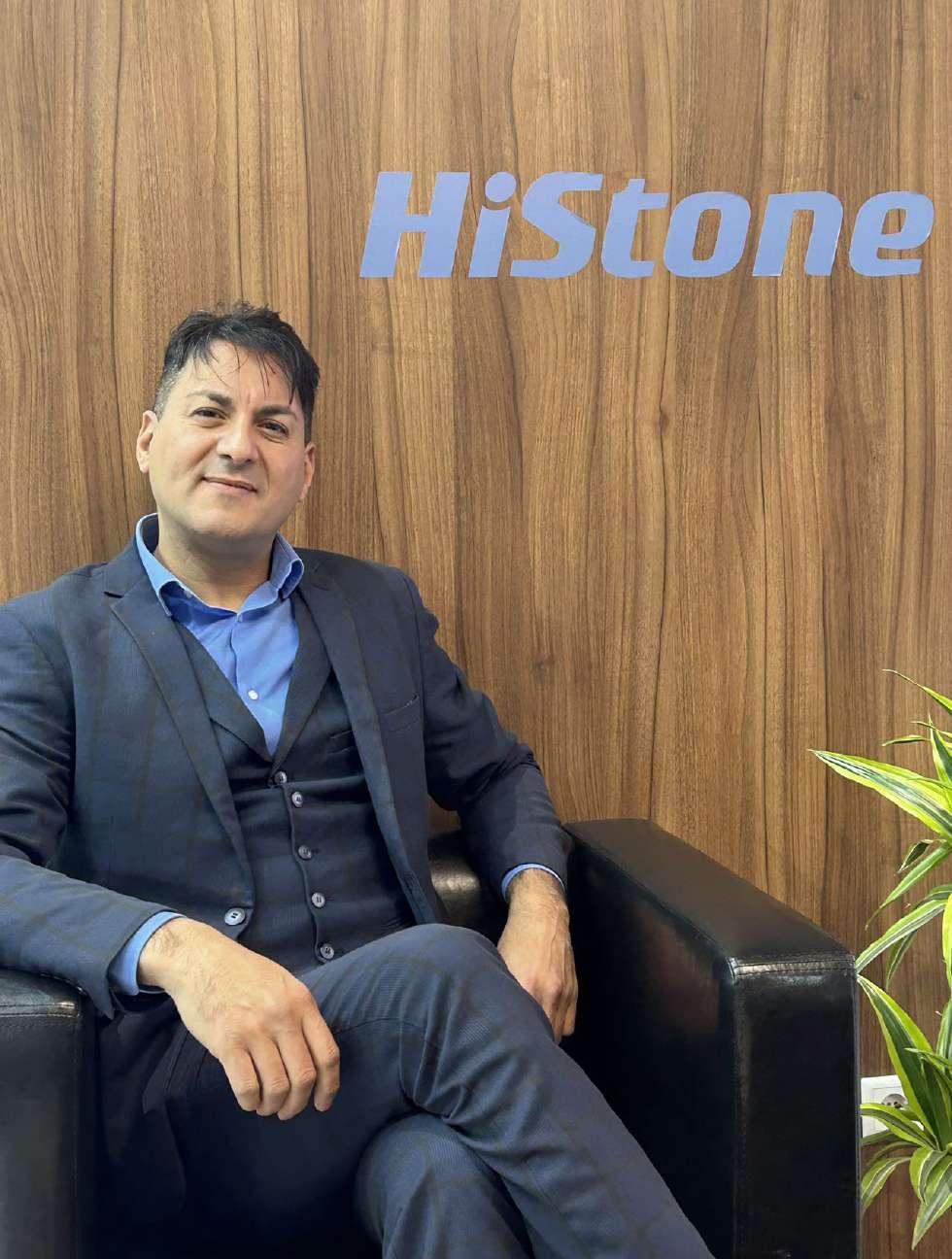
Mohamed Berrihi explains how AI, supply-chain resilience and ESG goals are redefining channel ecosystems.
Amid rapid technological disruption and shifting customer expectations, vendor-distributor relationships are being redefined. Qingdao HiStone Intelligent Commercial System Co., Ltd., a global leader in intelligent retail technologies, is leading this evolution by cultivating collaborative, data-driven partnerships that prioritise agility, service, and digital readiness.
In an exclusive interview with Sandhya D’Mello, Technology Editor, CPI Media Group, Mohamed Berrihi, EMEA Sales Manager at HiStone, outlines how the company is aligning with distributors to build resilient supply chains, embrace AI integration, and deliver long-term value across the channel ecosystem.
How has your approach to vendor-distributor collaboration evolved over the last few years, particularly in light of digital transformation and new technology trends?
As per the majority of Global Vendors, HiStone has seen its approach vendor-distributor collaboration evolving significantly due to digital transformation and emerging technology trends.
The Vendor-Distributor flows have become more dense and more Datadriven to ensure the decision-making process. Strategic planning and responses to daily challenges are now
governed by advanced Ai-powered CRM and ERP systems to optimise pricing strategies, identify cross-selling opportunities, and mitigate supply chain risks. Predictive analytics enable more proactive inventory management, minimising stockouts and overstock scenarios.
We saw our Business Model with Distributors moving from traditional transactional relationship to more integrated partner ecosystems. This involves creating joint go-to-market strategies, co-marketing initiatives, and training programs that align with emerging tech trends that we can’t not ignore anymore like AI, cybersecurity, and IoT.
We are also sensitive to the shifts that the distribution industry is heading to, namely the rise of “Everything as a Service” (XaaS). Most of Distributors will agree that their industry is becoming something more than pure product resellers to serviceoriented partners. Vendors can support here by enabling Distributors with the tools to manage recurring revenue streams, track customer lifecycles, and deliver ongoing value.
What key factors are driving stronger partnerships between vendors and distributors in today’s rapidly changing market? The question is truly relevant and carries in its formulation the key to the answer: rapidly changing market! Vendors and Distributors thrive
proactively to anticipate these changes rather than to suffer the consequences. Lead change instead of being overwhelmed.
Vendor-Distributor Partnership is driven by many factors whereas the most important is to develop Seamless Customer-Centric Models as customers demand seamless, unified solutions. Vendors and distributors must elevate their collaboration on customer experience strategies, aligning sales, support, and post-sale services to ensure consistent quality and quicker response times.
Vendors-Distributors must also mind the Resilience and Supply Chain Optimisation as the ongoing disruptions have underscored the need for more agile, transparent supply chains. They need to implement collaborative inventory management, demand forecasting, and contingency planning to mitigate risks.
Another factor is Integration of Automation and AI: Automated platforms are streamlining processes like order management, pricing updates, and customer support. This reduces friction, speeds up transactions, and enhances data accuracy across both partners.
Last but not least, not ignoring the Sustainability and ESG Initiatives. Nowadays Business is expecting to prioritise environmental, social, and governance (ESG) criteria. Therefore, both actors need to collaborate on sustainable sourcing, ethical logistics,
and carbon footprint reduction strengthens brand reputation and meets regulatory expectations.
How are supply chain challenges impacting your relationships with vendors and distributors, and what strategies are you implementing to ensure smooth collaboration?
We all know that supply chain is the lifeblood of any vendor-distributor relationship. This crucial bond secures sales operations continuity as well as technical support continuity to keep our customers happy. We dedicate significant resources and time to ensure smooth supply chain while minding global disruptions as well as the need to adapt to each region’s the adapted supply flow.
Years of experience and pertinent advise of our Channel Network helped us develop strategies in implementing a smooth supply chain collaboration.
The main and elementary strategy is to enhance visibility and data sharing. Let it be with our spare parts suppliers or with our Distributors, data collected and shared timely helps us develop predictive analysis to monitor inventory levels, understand demand forecasts and predict possible sources of disruptions. Ai Predictive technology will take here a significant role.
As a result of first strategy, we can optimise and reinforce our buffer stock strategy to be as close as possible to the actual needs of our channels.
In more mature areas such as the United Arab Emirates, we could even adopt extra advanced joint contingency plans with key distributors, this includes alternative transportation routes, warehousing options, and communication protocols.
All this need to invest in Advanced Supplier and Distributor Training Strategy: Providing training on emerging technologies (e.g., IoT, AI, cybersecurity) to equip distributors with the skills to manage new products effectively and reduce deployment risks.
What are the top three priorities for your company when selecting a distributor or vendor in the current business climate, and how do these

factors influence your long-term partnership strategies?
Selecting a distribution partner is a strategic step for any Vendor. In that selection process we mind some criteria and priorities for smooth partnership. One of the top priorities for us is strategic alignment and product expertise of the Distributor. A distributor that can demonstrate his full expertise and throughout understanding of our products field and embrace rapidly our technologyoffer is a great asset. This helps strongly to strategically align for long term in fostering mutual growth plans through joint go-to-market strategies.
We also value distributors that can show Resilience and Supply Chain Stability. The distributors that develop years of expertise have an acumen to set up robust risk management frameworks, diversify sourcing networks, and data-driven logistics capabilities to advise us to the best how mutually we can succeed a Channel Partnership in a disruptive world.
A third priority focuses on aspect of Data-Driven Capabilities and Digital Integration of Distributor. Partners that can seamlessly integrate digital platforms, share data in real-time, and leverage analytics for predictive insights provide a significant competitive advantage to Vendors.
WE’VE MOVED AWAY FROM A PURELY TRANSACTIONAL MODEL TO BUILD INTEGRATED PARTNER ECOSYSTEMS.
This digital readiness supports our global efforts to embrace a full transparent decision making process that enables our Distributors to trust our go-to-market strategies and be part of it. It strengthen also trend analysis and predictive supply models putting us at the forefront of what Distributors need from us and beyond that what End-Users expects from us. Furthermore it can support mitigate supply chain risks.
Those three priorities are our north star to develop a Distributor-Centric strategy that can only increase their loyalty, engagement and satisfaction.
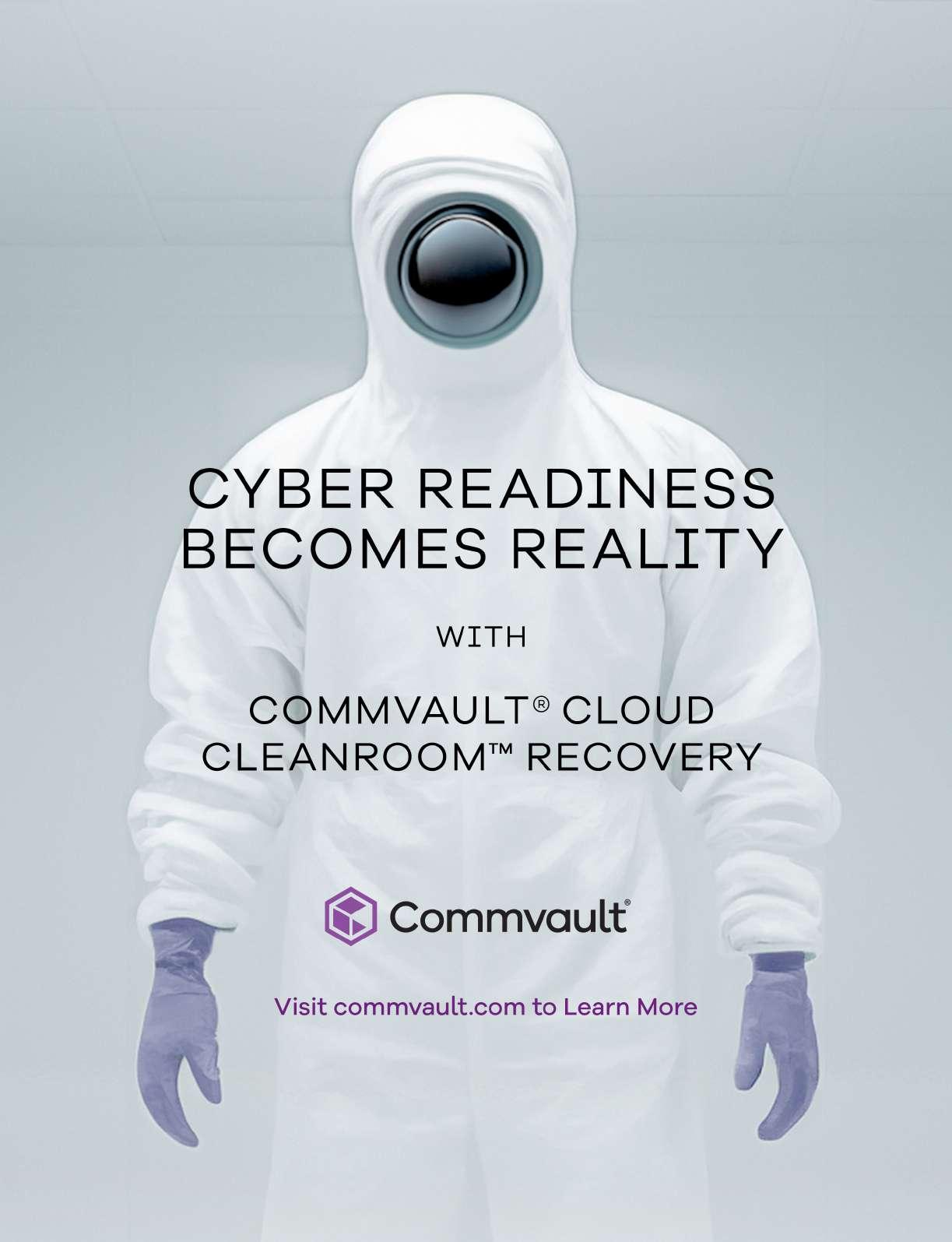
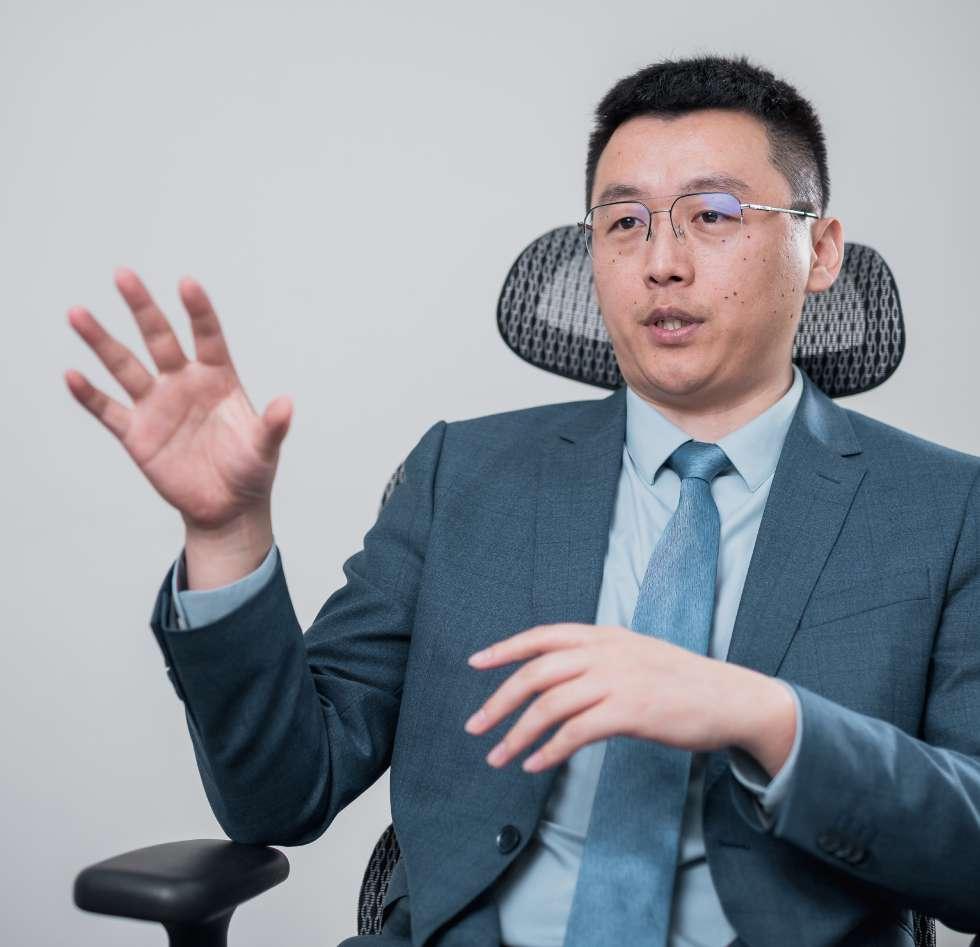
TP-Link is setting bold benchmarks for innovation in 2025, reshaping the future of connectivity and security. The company’s strategic roadmap include rollout of a comprehensive Wi-Fi 7 portfolio and AI-optimized network management to game-changing surveillance advancements with solar-powered VIGI devices and Omada’s centralized systems. With an emphasis on empowering channel partners, driving sustainability, and expanding across the Middle East and Africa, Jiang explains how TP-Link is making cutting-edge technology more accessible while solidifying its position as a leader in secure, scalable networking solutions.
How does TP-Link’s WiFi 7 technology enhance connectivity, and what challenges do you foresee in its adoption across the MEA region?
TP-Link’s Wi-Fi 7 technology brings groundbreaking advancements in wireless networking, set to transform connectivity experiences. We take great pride in being the first vendor to launch a complete range of Wi-Fi 7 solutions for both home and enterprise environments.
The Wi-Fi 7 technology brings significant improvements in speed, latency, and network capacity. It delivers ultra-fast data rates of up to 46 Gbps—nearly 4.8 times faster than Wi-Fi 6—thanks to 320 MHz bandwidth and 4096-QAM modulation, ideal for HD streaming, gaming, and smart homes. Latency is reduced by up to four times, enabling real-time performance for VR and interactive applications. Additionally, Multi-Link Operation (MLO) boosts network capacity and efficiency by handling multiple data streams across frequency bands, making it ideal for device-dense environments like offices and public spaces.
The adoption of Wi-Fi 7 technology across the Middle East and Africa (MEA) region faces several challenges. One of the primary hurdles is infrastructure limitations, as many areas still lack the robust telecommunications framework needed to support high-speed connectivity.
This shortfall makes the deployment of advanced technologies like Wi-Fi 7 difficult. Economic disparities also play a significant role, with the high costs of implementation and operation potentially restricting access in regions where disposable incomes are lower. Additionally, regulatory considerations impact the rollout, as the availability of the 6 GHz frequency band—crucial for Wi-Fi 7’s performance—differs from country to country, depending on local spectrum policies and approvals. Finally, market awareness remains a key issue; without sufficient education on the benefits of Wi-Fi 7, both consumers and businesses may be hesitant to upgrade, leading to a slower rate of adoption across the region.
How does Omada’s flexible management architecture cater to enterprise networking needs, and what sets it apart from competitors?
Omada’s flexible management architecture is tailored to meet the varied networking needs of modern enterprises by offering a robust and intelligent approach to network administration. At the core of its solution is centralized cloud management, powered by a SoftwareDefined Networking (SDN) platform that seamlessly integrates access points, switches, and routers to ensure unified control over both wireless and wired connections. Omada also
features zero-touch provisioning, enabling remote deployment and configuration without the need for on-site technical support—significantly simplifying setup and reducing operational costs. Additionally, the platform leverages AI-driven technology to analyze network performance, offer optimization recommendations, and proactively resolve potential issues, thereby boosting network efficiency and ensuring consistent reliability.
TP-Link’s Omada distinguishes itself in the competitive networking solutions market through a range of standout features tailored for flexibility, efficiency, and security. One of its key advantages is flexible management options—users can manage their networks without the need for a dedicated controller, choosing between hardware controllers, software controllers, or cloud-based management. This approach allows businesses to customize their setup according to their needs while avoiding unnecessary subscription costs. Omada’s unified network architecture further simplifies operations by enabling centralized management of WAN, LAN, and wireless components through a single platform, enhancing overall efficiency. Its comprehensive cloud-based management capabilities allow administrators to remotely monitor and configure networks using the Omada Cloud-Based Controller. Tools like batch configuration, multi-site management, and remote firmware updates streamline day-to-day network maintenance. Security and reliability
THE WI-FI 7 TECHNOLOGY BRINGS SIGNIFICANT IMPROVEMENTS IN SPEED, LATENCY, AND NETWORK CAPACITY, DELIVERING ULTRA-FAST DATA RATES OF UP TO 46 GBPS—NEARLY 4.8 TIMES FASTER THAN WI-FI 6—THANKS TO 320 MHZ BANDWIDTH AND 4096-QAM MODULATION, IDEAL FOR HD STREAMING, GAMING, AND SMART HOMES.
are also at the forefront of Omada’s offering—the system ensures that user traffic does not pass through the cloud, maintaining data privacy, while delivering 99.9% SLA availability, 24/7 automated fault detection, and backup servers in geographically isolated locations for added reliability. Finally, AI-driven network optimization equips IT teams with proactive insights, such as automatic channel selection and power adjustment, helping reduce interference and significantly boosting wireless network performance.
With cybersecurity being a major concern, how does Omada ensure secure and scalable network management for businesses?
TP-Link’s Omada platform is designed to provide businesses with secure and scalable network management, integrating advanced security measures, independent verification, and a forward-looking approach to continuous improvement. At the heart of this solution lies a comprehensive security framework, which is central to TP-Link’s product strategy. Omada is built to anticipate, identify, and respond to risks effectively through internal penetration testing, real-world threat modeling, and adherence to industry standards like the OWASP IoT Top 10, ensuring resilience against ever-evolving cyber threats.
Security assurance is further reinforced through rigorous internal and external assessments. TP-Link collaborates with accredited thirdparty security labs to examine Omada
products, ensuring any vulnerabilities are addressed proactively. Public security data shows that TP-Link maintains vulnerability rates that are equal to or lower than other industry leaders, underscoring its strong commitment to robust cybersecurity practices.
As a strong proponent of the secureby-design philosophy, TP-Link actively supports global security initiatives, including the U.S. Cyber Trust Mark and the EU’s Cyber Resilience Act. These frameworks guide Omada’s development process, ensuring transparency through Software Bills of Materials (SBOMs) and alignment with top-tier industry standards.
Omada also prioritizes proactive threat mitigation and transparency. Businesses receive timely firmware updates and critical security advisories, along with clear end-of-life policies to ensure continued support. The platform’s cloud-based centralized management system further enhances protection by isolating management data from user traffic.
Engagement with the global cybersecurity community is another pillar of TP-Link’s strategy. Through its vulnerability disclosure program and participation in initiatives like PWN2OWN, TP-Link ensures fast responses—typically within five working days—to any reported issues, continuously testing and improving Omada’s defenses.
Omada’s strength also lies in TPLink’s CI/CD development approach, which integrates security at every stage of the lifecycle. This enables early detection and resolution of potential vulnerabilities while ensuring scalability, high availability, and rapid response to threats. By embedding security into its core and staying
closely aligned with industry best practices, TP-Link has positioned Omada as a reliable, future-ready solution for secure business network management.
What makes VIGI a standout surveillance solution, and how does it integrate with modern security ecosystems?
VIGI emerges as a powerful, AIenhanced, and cost-effective surveillance solution designed to meet the evolving security needs of modern businesses. Its ease of deployment, scalability, and compatibility with current security ecosystems make it a future-ready choice for seamless and intelligent security management. With advanced features like AI-powered analytics, ONVIF support, Omada SDN integration, and industry-leading warranty services, VIGI offers a comprehensive and reliable approach to surveillance.
At the core of its capabilities are AI-powered analytics. VIGI cameras utilize advanced AI chips and deeplearning algorithms to monitor live footage in real time, detect unusual events, and send immediate alerts. This intelligent approach significantly reduces false alarms and enhances response times, improving overall security effectiveness. In addition, VIGI’s ColorPro Night Vision technology ensures sharp, full-color images even in extremely low-light conditions, enabling round-the-clock surveillance with exceptional clarity.
VIGI also offers flexible management options through both standalone setups and centralized Video Management Systems (VMS). The VMS enables unified control over multiple devices, streamlining operations and providing user-friendly access across different sites. For broader compatibility, VIGI supports the ONVIF protocol, allowing integration with a wide range of third-party NVRs and VMS platforms, ensuring seamless interoperability in diverse security environments.
Moreover, VIGI is designed to integrate effortlessly with TP-Link’s Omada Software-Defined Networking (SDN) ecosystem. This compatibility allows centralized monitoring of both surveillance and enterprise network
infrastructure, with Power over Ethernet (PoE) support simplifying installation and connectivity. Businesses also benefit from the VIGI Cloud VMS, a cloud-hosted platform that offers centralized control via web portals, mobile apps, and PC clients— ideal for managing security across multiple locations.
By combining AI intelligence, superior night vision, versatile management tools, and strong integration capabilities, VIGI positions itself as a smart, scalable, and futureproof surveillance solution tailored for modern businesses.
What are TP-Link MEA FZE’s key innovations and strategic plans for networking and surveillance solutions in 2025?
In 2025, TP-Link is set to transform connectivity and security with the full launch of its Wi-Fi 7 and MGIG solutions, catering to both home users and businesses, especially SMEs and large enterprises. These offerings promise ultra-fast speeds, reliable connectivity, and unified network performance across all user segments.
TP-Link is also integrating AI-driven technology across its product line to enhance network performance. These AI-enhanced systems will automatically optimize traffic, troubleshoot issues, and strengthen security, creating efficient, selfmanaging networks for homes and businesses alike.
On the surveillance front, TP-Link’s VIGI portfolio introduces innovations like solar-powered, 5G-connected security devices, enabling flexible, sustainable installations without traditional wiring. A highlight is the InSight S345-4G device with three LAN ports for efficient multi-device connectivity.
Additionally, Omada Central offers centralized management of both networking and surveillance systems, simplifying operations for SMEs by enabling unified control across multiple sites. Together, VIGI and Omada Central deliver a powerful combination of intelligent security and seamless connectivity, making TP-Link a leader in next-generation networking and surveillance solutions.

What are TP-Link’s strategic plans for expanding its presence in the Middle East and Africa (MEA) in 2025?
In 2025, TP-Link is focusing on expanding its footprint across the MEA region by strengthening partnerships with local distributors and increasing its presence in smaller cities and rural areas. This strategic effort aims to make high-performance, affordable networking solutions accessible to a broader audience, especially small and medium-sized businesses (SMBs), and support digital transformation in underserved regions.
How does TP-Link support its channel partners in keeping up with evolving technology?
TP-Link places a strong emphasis on partner empowerment through structured training and hands-on technical learning. Recognizing the rapid pace of digital innovation, TP-Link ensures that distributors and channel partners are well-equipped with the latest knowledge and skills. By offering immersive training programs, TPLink enables partners to confidently implement and support advanced solutions such as Wi-Fi 7 and VIGI surveillance systems, building trust and fostering long-term collaboration.
What role does sustainability play in TP-Link’s 2025 strategy?
Sustainability is a key component of TP-Link’s 2025 vision. The company is integrating energy-saving technologies into its product designs to reduce carbon
footprints and improve energy efficiency. With increasing global awareness around environmental issues, TP-Link aims to lead the way in offering eco-friendly networking solutions suitable for both personal and professional use.
What steps is TP-Link taking to ensure the security of its networking and IoT products? Security is a top strategic priority for TP-Link. The company employs rigorous internal and external testing—including penetration tests and threat modeling—to secure its devices. TP-Link demonstrates fewer vulnerabilities and faster resolution times compared to industry peers. It also supports global security initiatives like the EU Cyber Resilience Act, U.S. Cyber Trust Mark, and the “Secure by Design” pledge. Transparency is maintained through Software Bills of Materials (SBOMs) and regular firmware updates, and the CI/CD development model ensures rapid threat response and customer trust.
How does TP-Link engage with the broader security community?
TP-Link actively collaborates with the cybersecurity community through its vulnerability disclosure program and participation in security events such as PWN2OWN. These engagements help the company stay ahead of emerging threats, reinforce its security posture, and uphold its reputation as a trusted leader in networking and IoT security.
INTERVIEW // REDINGTON
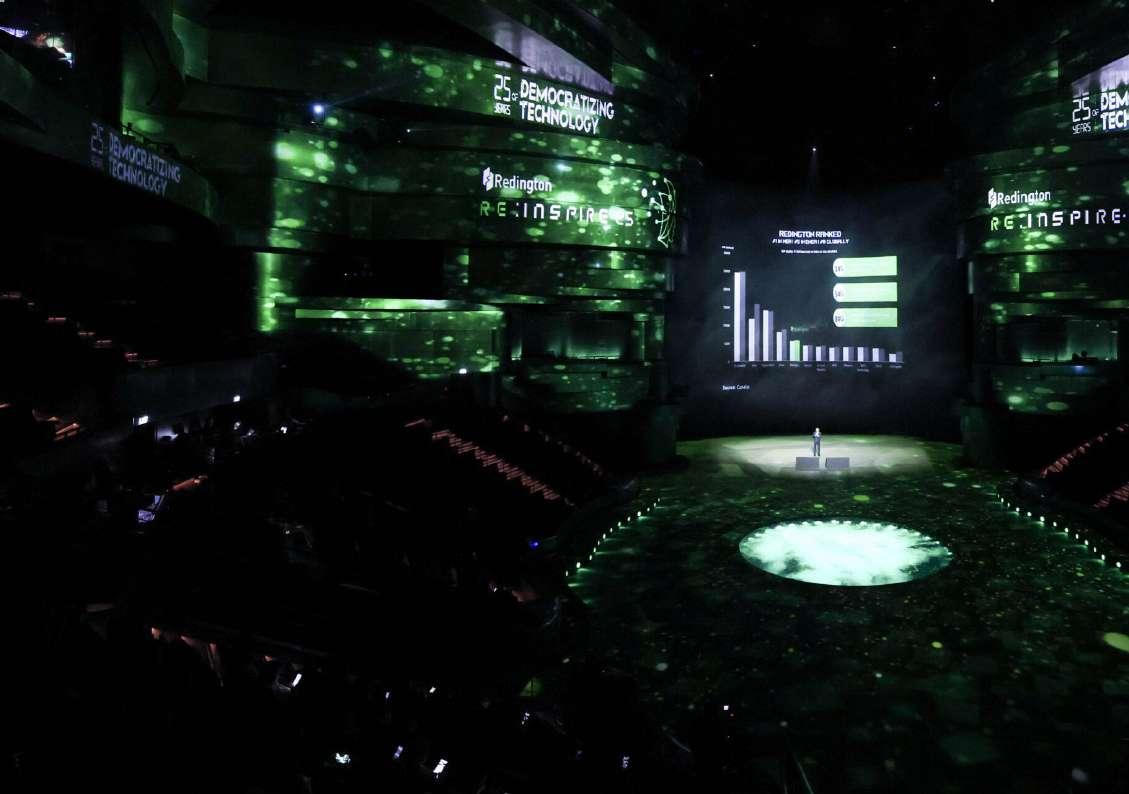
Celebrating 25 years of trust, transformation, and technology enablement across the Middle East and Africa.
Redington, a leading technology aggregator and innovation powerhouse across emerging markets, recently celebrated 25 years of democratising technology across
Middle East and Africa at Redington ReInspire 2025, held at La Perle, Dubai.
Redington’s Managing Director and Group CEO, V.S. Hariharan, reflected on the company’s evolution
to a purpose-led digital platform. Hariharan said, “We didn’t start as a tech giant, but today we stand as the leading tech distributor in MEA, trusted by a large network of global brands and channel partners. What sets us apart is not just scale, but the
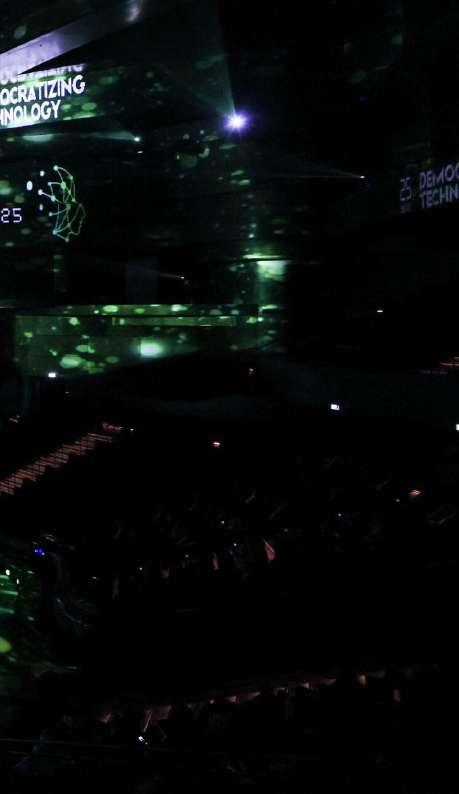
WE DIDN’T START AS A TECH GIANT, BUT TODAY WE STAND AS THE LEADING TECH DISTRIBUTOR IN MEA, TRUSTED BY A LARGE NETWORK OF GLOBAL BRANDS AND CHANNEL PARTNERS.”
V.S. HARIHARAN MANAGING DIRECTOR
AND GROUP CEO, REDINGTON
strength of our ecosystem – channel partners, vendors and customers –working in gravitational harmony. That’s how we’ve grown, and that’s how we’ll continue to democratise technology for decades to come.”
The La Perle, Dubai theatre was packed with over 700 attendees –channel partners, technology vendors, and longtime collaborators – each of whom has played a role in Redington’s remarkable growth story. The event’s sponsors featured Microsoft, Fortinet, AWS, HPE, Aruba, Intel, Qlik, Nutanix, Confluent, along with media partners
Tahawultech.com and Reseller Middle East.
Narayanan KV, Head of Omni Channel for the Middle East, Saudi Arabia, and Africa at HP Inc., delivered a heartfelt tribute to HP’s 25-year partnership with Redington during his keynote address, highlighting the strength, trust, and shared success that have defined the journey.
The packed agenda also featured keynote addresses from Rachel Lashford, Vice President, Marketing at Canalys; Adi Morun, Director – Data & AI Business, CEMA, Microsoft and Shadi Shidvash, EMEA Distribution Sales Director at Intel.
Lashford shared compelling insights with channel partners in the room on emerging opportunities in AI, Cloud, SaaS and beyond in her keynote session, highlighting how partners can stay ahead in a rapidly evolving digital landscape.
Morun delivered thought-provoking takeaways on ‘Innovation in the Era of AI’, offering a clear vision of how data and AI are reshaping industries and unlocking new possibilities for partners.
Shidvash presented an engaging keynote titled ‘Intel Inside, Great Partnerships Outside’, emphasising the power of collaboration in driving innovation, performance, and ecosystem-wide impact.
Three power-packed panel discussions set the tone for forwardlooking conversations during Redington ReInspire.
There was a panel that brought Redington’s new leadership team on stage for a deep dive into the company’s strategy, culture, and next phase of growth. Moderated by the CEO of Redington MEA Viswanath Pallasena, the Redington panellists included Ramesh Natarajan, Chief Executive Officer, IME; Sayantan Dev, Global Head - Software Solutions Group; Serkan Celik, Chief Executive Officer, (Turkey, Africa, Egypt, CIS Region) and Serkan Kutlu, Global Chief Strategy Officer.
Pallasena said, “Over the last 25 years, Redington has made a real mark on the market. However, we’re not standing still – we’re evolving with it. As the needs of our partners and customers change, we’re gearing up for what’s next, embracing a digital-
first mindset, and staying aligned with where the industry is headed.”
Natarajan said, “What we’ve built over time is powerful, but what we’re building next is transformative. Together with our partners, we’re reimagining and reinspiring the business of technology to be faster, more open, and deeply human.”
The next panel, ‘Building Intelligent Ecosystems in a Software-Defined Era’, moderated by Sayantan Dev, explored how technology providers and partners can enable smarter, more adaptable businesses. The panellists included Andy Parkinson, Senior Director, Distribution Head EMEA / Channel Sales Leader META & CIS, Qlik; Vinod Krishnan, Head, Partner Management, META, AWS; Shane Grennan, Senior Director of Partner Sales and Business Development, MET, Fortinet; and Raif Abou Diab, Country Manager – UAE, Oman, Pakistan, Yemen & Sub-Saharan Africa at Nutanix
Dev said, “Redington has been committed to building intelligent ecosystems by bridging global innovation with regional opportunity. Redington ReInspire’s venue, La Perle, Dubai, much like our vision, blends creativity with impact—an ideal setting to discuss what it means to thrive in a software-defined era. We are no longer talking about individual solutions. We’re building interconnected ecosystems, where software, infrastructure, and services converge to deliver lasting value.”
In another panel, Powering Technology That Matters, Redington invited leaders from Microsoft, HPE, Intel, and HPE Aruba to examine how AI, infrastructure, and connectivity can align with purpose and performance. This panel, presented in partnership with Intel, included Shadi Shidvash, EMEA Distribution Sales Director at Intel; Syed Mansoor Hussain, Device Partner Sales Lead UAE, Microsoft; Michael Langeveld, Head of Technology & Business Development (Emirates & Africa), HPE; and Ahmed AlSayed, Regional Channel Sales Manager, MEA, HPE Aruba.
The event honored over 60 longstanding vendors and channel partners with Legacy Loyalty Awards, recognising those who have stood with Redington through every transformation.

REDINGTON WAS NEVER JUST ABOUT DISTRIBUTING BOXES. EVERY NEW CATEGORY WE EMBRACED WAS AN OPPORTUNITY TO CREATE NEW VALUE FOR OUR ECOSYSTEM—AND TO STAY AHEAD OF THE CURVE.

Celebrating 25 years in the Middle East and Africa, Redington sets its sights on AI, cloud, and localised expansion to power the region’s next wave of digital transformation.
Standing on the stage at La Perle, Dubai, in front of a packed house of global technology vendors, strategic channel partners, and senior leadership, V.S. Hariharan, Managing Director and Group CEO, Redington, marked a defining milestone: 25 years of Redington’s journey in the Middle East and Africa. The Redington ReInspire 2025 event wasn’t just a celebration of the past—it was a springboard into the future.
In a candid conversation on the sidelines of the event with Tahawultech.com, Hariharan unpacked the company’s strategic evolution from a category-focused distributor into a powerhouse delivering integrated, scalable technology solutions across the MEA region. “When I reflect on our journey, I see four dimensions that shaped our transformation— geography, business categories, brands, and channel partners. Each played a critical role in how we built and sustained momentum,” he said.
Starting with printers and later expanding into PCs, servers, mobility, cloud, and now AI, Redington’s business has evolved in tandem with the needs of the market. The UAE and Saudi Arabia, once entry points, are now billion-
dollar markets for the company, while Africa continues to emerge as a growth frontier.
At the heart of this success lies the company’s symbiotic relationship with thousands of channel partners and an impressive portfolio of global technology brands. But Hariharan was quick to credit the team behind the scenes.
“A majority of our leadership and core teams have been with Redington for over two decades. That kind of continuity and trust doesn’t just drive growth—it defines culture,” he said. Looking ahead, Hariharan is sharply focused on enabling the next wave of digital transformation, led by cloud, AI, and everything-as-a-service models. But rather than competing with global integrators, Redington is taking a different route.
“We’re investing in competencies so we can uplift our partners. Whether they come from a hardware or cloud background, we help them scale horizontally. Our goal is to multiply—not replace—their capabilities,” he explained.
This partner-led multiplier model reflects the company’s ethos of democratising technology. As governments and enterprises in the region accelerate investments in AI and digital infrastructure, Redington
is positioning itself as a vital enabler.
With strongholds in the UAE and KSA, the company is now eyeing deeper regional penetration across the Levant, North Africa, and East Africa. Localisation, compliance, and adaptive business models are at the core of this expansion strategy.
“Africa is the opportunity of the future. But it demands a long-term view and a localised approach. We want to build not just a presence— but a purpose—in every market we enter,” said Hariharan.
When asked about the UAE’s growing prominence in global technology circles, Hariharan was unequivocal.
“Dubai has become one of the world’s most desirable destinations for talent, investment, and innovation. We’re already working on setting up an AI Centre of Excellence here to contribute meaningfully to the national AI agenda,” he revealed. As Redington charts a course toward a $10 billion regional business, its mission remains anchored in shared growth, technology democratisation, and ecosystem empowerment.
“We’ve always believed that our success must elevate everyone around us—our brands, our partners, and our people,” Hariharan concluded.
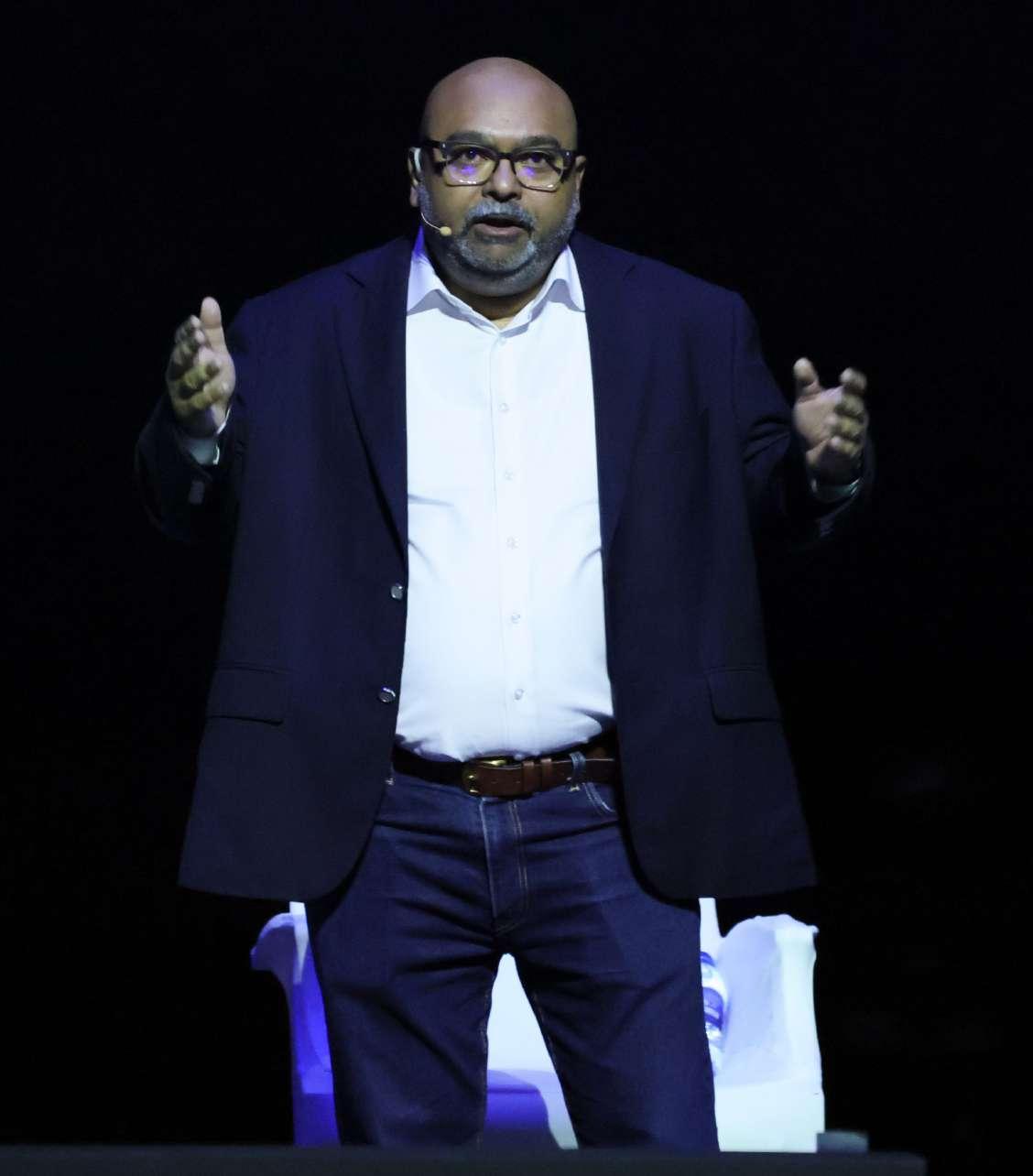
Redington has spent a quarter-century expanding access to cutting-edge technology across the Middle East and Africa, and its silver-jubilee showcase — Redington ReInspire 2025 at La Perle, Dubai — set the stage for its next act. Central to that future is the newly minted Software Solutions Group (SSG), a dedicated unit that consolidates the distributor’s cloud, software, and security businesses into a single, digitally driven powerhouse. Speaking to Tahawultech.com, Sayantan Dev, Global Head of SSG, explains how the unit will accelerate subscriptionbased growth, streamline partner enablement through platforms such as CloudQuarks, and equip channel ecosystems with the skills, compliance support, and recurring-revenue models needed to thrive in a rapidly evolving market.
Can you walk us through the reason for forming a new business unit – Software Solutions Group? What are the key goals and outcomes you’re aiming to achieve with this dedicated business unit? With the way the tech landscape is shifting – towards cloud-first, subscription-based, and service-led models – we felt it was the right time to take a more strategic approach. That’s why we launched the Software
Solutions Group, or SSG. It brings together all our software, cloud, and security businesses under one focused unit. The goal is to accelerate our presence in high-value, non-physical, and recurring revenue streams. But more than that, it’s part of a broader transformation across Redington – to become more agile, capabilitydriven, and digitally enabled. It’s about sharpening our local execution, building deeper partnerships, and making decisions faster so we can stay ahead of the curve.
The group is designed with some clear strategic priorities. First, we’re moving toward subscription-led growth by focusing on scalable, digital-first offerings, whether that’s SaaS, IaaS, or PaaS. To support this, SSG has a global-regional structure. The global team drives strategy, alliances, engineering, and marketing, while regional business units focus on execution and partner enablement across MEA, India, ASEAN, and Turkey.
We’re also working closely with global software vendors and actively growing our partner ecosystem, including onboarding ISVs and startups through dedicated programs.
A big enabler here is our CloudQuarks platform, which allows partners to transact, manage subscriptions, and scale their cloud business easily and compliantly. We are focusing on building digital infrastructure and driving the marketplace motion. On top of that, we’re investing heavily in capability building through Redington Academy and training, and specialised practices in areas like security, analytics, and AI. This ensures our teams and partners are fully equipped to deliver real value in a digital-first world.
and analytics—giving partners clear, actionable insights to drive growth and retention.
We have made licensing and compliance easier through our dedicated support teams and upskilling programmes like Redington Academy. We’re also developing integration tools to bridge legacy systems with modern SaaS platforms, making operations more seamless.
Our two-tier model helps us scale efficiently – Redington focuses on the platform, enablement, and services, while resellers concentrate on customer relationships and solution delivery. And through ongoing capability building in cloud, security, analytics, and AI, we’re ensuring our partners stay future-ready.
What is your message for channel partners and the market as the global head of SSG?
I want to reaffirm our unwavering commitment to empowering our channel ecosystem in this era of software-first transformation.
THE GOAL IS TO ACCELERATE OUR PRESENCE IN HIGH-VALUE, NONPHYSICAL, AND RECURRING REVENUE STREAMS.
With a rapidly evolving market and tech, how do you help partners navigate complex licensing, subscription models, and platform integrations? Partner enablement is core to our strategy, especially in today’s fastevolving tech landscape. We’ve built a unified digital platform that simplifies subscription management, renewals,
We are investing in capabilities that drive real impact across our partner ecosystem. For VARs, we’re enhancing access to product support, certifications, and technical training through initiatives like Redington Academy. SIs benefit from project coordination, supply chain support, and capital assistance to scale deployments, while MSPs gain access to infrastructure support, SOC and SIEM tools, and marketplace enablement. CSPs are supported with streamlined onboarding, compliance, and lifecycle management. ISVs and startups can tap into co-marketing, programme access, and demand generation via Redington platforms like The Pitch Room, The Forum, and The Vertical.
The technology landscape is evolving rapidly – with cloud, cybersecurity, AI, and data analytics reshaping how businesses operate. At Redington, we recognise that our partners are at the heart of this transformation. That’s why SSG was created as a strategic enabler for our partners to thrive in a digital-first world.

Intel’s Shadi Shidvash reflects on 25 years of partnership with Redington and how collaboration is shaping the future of AI, hybrid work, and digital transformation in the Middle East.
Redington marked a significant milestone with Redington
ReInspire 2025, a celebration of its 25-year legacy in democratising technology across the Middle East and Africa. Held at La Perle, Dubai, the event brought together global tech leaders, partners, and innovators to showcase the impact of collaborative ecosystems in driving meaningful transformation across emerging markets.
Shadi Shidvash, EMEA Distribution Sales Director at Intel, delivered a keynote titled ‘Intel Inside, Great Partnerships Outside’, spotlighting the enduring collaboration between Intel and Redington. His message centred on the importance of ecosystem partnerships in scaling innovation, performance, and adoption of AIpowered technologies in the region.
In this exclusive interview, Shidvash discusses the evolution of Intel and Redington’s partnership, the regional demand for AI and hybrid solutions, and how channel partners can lead the next wave of innovation.
Intel and Redington share a longstanding relationship. How has this collaboration evolved over the years to support innovation across the Middle East?
It’s truly been a decades-long partnership rooted in a shared vision—to enable greater access to technology across the region. While
Intel focuses on building cuttingedge AI and hardware innovations, Redington plays an essential role in scaling these solutions. They help us bring technologies not only to channel partners and elite systems integrators, but also directly to end customers. Redington supports this through ongoing technical enablement, partner training, go-to-market initiatives, and by significantly contributing to the Intel Partner Alliance (IPA) programme. They’ve been instrumental in expanding our partner network and fostering communication through trainings, incentives, and matchmaking. Their contribution is central to Intel’s regional impact.
How do you see the rise of AI, high-performance computing, and hybrid work shaping demand for Intel-powered technologies in this region? This is a pivotal moment. The region is investing heavily in AI infrastructure and digital ecosystems, and that’s accelerating demand across three major fronts.
Firstly, client PCs—there’s a surge in demand for AI-capable devices at the edge. With our Core Ultra processors and embedded NPU technology, customers can run AI inference directly on devices, ensuring both performance and data privacy.
Secondly, data centres and hybrid cloud—our Xeon 6 processors come with integrated AI engines and hardware-level security features like
SGX and TDX, enabling secure and confidential AI at scale.
Lastly, we see momentum around vertical AI solutions and edge computing. We’re working with platform vendors and software partners to deliver industry-specific solutions, from government to education and enterprise. Redington plays a strategic role in bringing these solutions to market with their robust partner ecosystem.
What are the biggest opportunities for channel partners in this evolving tech landscape, particularly with Redington as a key ally?
Channel partners now have a tremendous opportunity—but it’s not just about selling AI; it’s about deploying it meaningfully. The vendors are ready, the tech is here, but the true differentiator will be the partner that listens to the customer, understands their AI journey, and guides them through it.
Sales today are no longer onesize-fits-all. Partners must adopt a customer-first mindset—asking where the client is, where they want to go with AI, and how to take them from point A to Z. This is what will define success in the new tech paradigm.
We’re committed to this approach and are working closely with Redington to enable partners with the tools, technologies, and mindset needed to lead. It’s the perfect time for the ecosystem to embrace AI with purpose.

THE MIDDLE EAST IS UNDERGOING A VISUAL REVOLUTION NOT JUST IN WHAT PEOPLE SEE, BUT IN HOW SPACES PERFORM. THE MIPVISUALPERFECT DOESN’T JUST MEET TODAY’S IMMERSIVE EXPECTATIONS, IT ANTICIPATES TOMORROW’S.
In a region where innovation is not just encouraged but expected, immersive digital experiences are fast becoming the new language of brand engagement. Across the Middle East, from the glittering retail boulevards of Riyadh to the ultramodern hospitality destinations of Dubai, next-generation LED technology is transforming spaces into dynamic storytelling platforms. This momentum reflects the broader aspirations of Saudi Arabia’s Vision 2030 and the UAE’s Smart City strategy which place customer experience, innovation, and measurable impact at the core of national progress.
Fine-pitch LED displays are at the heart of this transformation, enabling a shift from static signage to fullsensory digital storytelling. These high-resolution, dynamic surfaces are not only capturing attention, but they are also retaining it. In retail, hospitality, and corporate spaces, they’re helping brands move beyond one-way communication to create immersive environments that respond to visitor behavior, mood and motion. According to the International Market Analysis Research and Consulting (IMARC) Group, the global digital signage market is expected to reach $45.5 billion by 2032 , with the Middle East seeing double-digit growth driven by smart infrastructure investments and a booming retail sector.
This evolution is not just about technology, it’s about human
connection. In a world where consumers are inundated with content, creating physical spaces that evoke emotion, surprise and delight can make all the difference. Research from PwC shows that 86% of buyers are willing to pay more for a better customer experience, and 65% find in-store digital engagement to be a key differentiator. Whether it’s a hotel lobby that adapts visually to the time of day or a flagship store that immerses visitors in interactive brand stories, LED displays are becoming central to how experiences are designed and remembered.
In this landscape, Unilumin’s latest innovation, MIP-Visualperfect, represents a pivotal leap forward. Engineered for the demands of Gulf climates, MIP-Visualperfect combines the modular flexibility of traditional SMD technology with the high contrast and visual consistency of COB while avoiding the drawbacks of both. It delivers superior color consistency, flatness, and resilience across indoor and outdoor environments, offering businesses a display solution that is not only visually striking but also commercially scalable. It is more than a screen, it is a medium for real-time storytelling, analytics, and adaptability.
As the “metasight” concept gains traction in the region, the role of digital surfaces is expanding. Walls, ceilings and windows are no longer passive; they’re part of the narrative.
Unilumin’s displays are enabling this shift by providing the visual infrastructure for environments that can sense, engage and evolve. Looking ahead, as AI, spatial computing, and digital twins become part of the built environment, LED display systems will act as interactive bridges between digital intent and physical reality, turning public spaces into intelligent, responsive experiences.
Retail in the Middle East isn’t just a transaction, it’s a destination experience. As competition intensifies and consumer expectations evolve, immersive visual environments powered by advanced LED are turning storefronts into storytellers. MIP-Visualperfect allows retailers to not only capture attention but to sustain engagement measurably and memorably.
The Middle East is undergoing a visual revolution not just in what people see, but in how spaces perform. The MIP-Visualperfect doesn’t just meet today’s immersive expectations, it anticipates tomorrow’s.
As this next chapter of digital infrastructure unfolds, the opportunity for brands and businesses is clear. In a market defined by innovation and high consumer expectations, the spaces we create must be as intelligent and expressive as the people who move through them.
Because in the end, it’s not just about being seen, it’s about being felt, remembered and chosen.
Honouring human expertise behind secure systems that power the UAE’s critical services
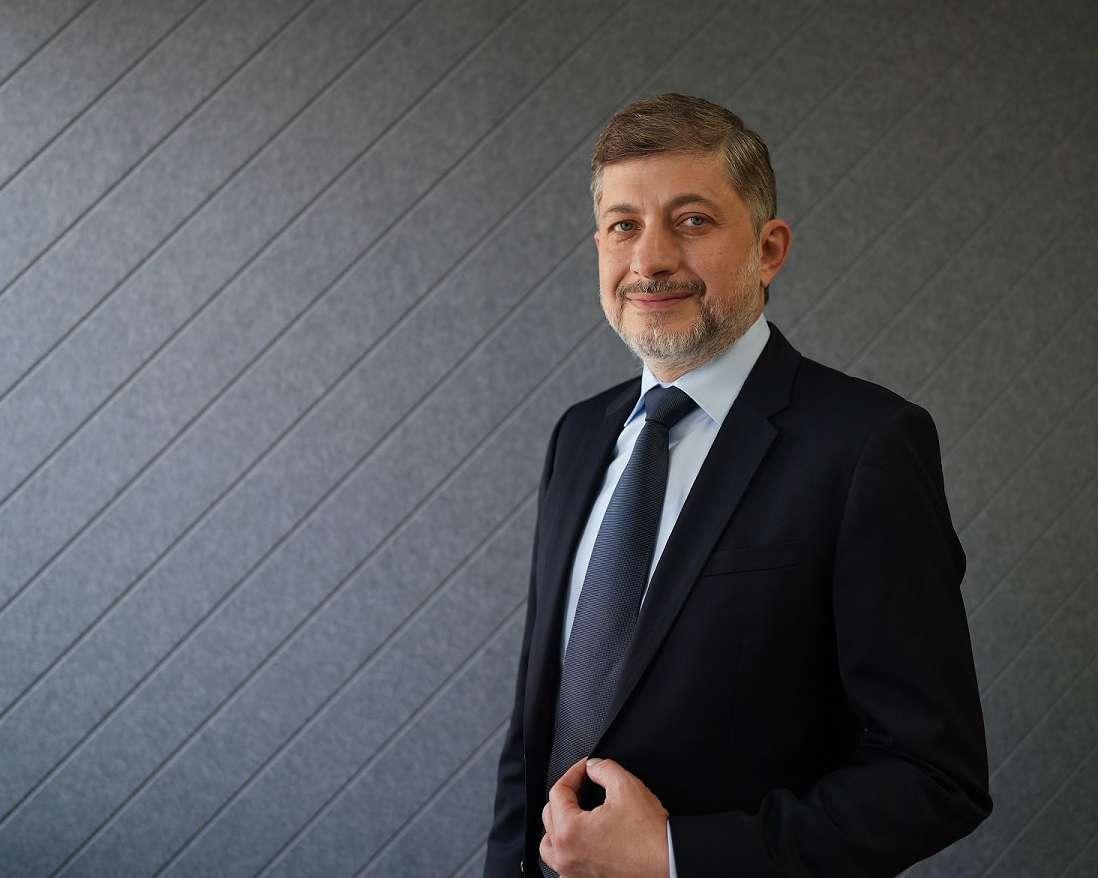
Refat Al Karmi Senior Consultant for META at Juniper Networks.
Critical industry sectors such as healthcare, government and utilities services are becoming increasingly reliant on digital systems, and as these systems grow more sophisticated, so do the threats that target them. At the heart of this delicate balance between innovation and security lies a group often overlooked – network and cyber security professionals.
Imagine a hospital’s life-support systems faltering during critical surgery, a school building’s security lockdown failing during an active
threat drill, or a state government’s emergency response network collapsing during a natural disaster. These scenarios are daily hypotheticals faced by the cybersecurity teams of our digital age. Their tireless work ensures data is protected, services stay online, and critical operations are uninterrupted, even under immense pressure. The digital dependence of critical industries has made a secure IT infrastructure absolutely essential. As a result, cybersecurity professionals are now as vital as any frontline worker in maintaining the integrity and functionality of these systems.
Across a wide range of sectors, maintaining secure network uptime is a constant challenge. Secure network and cyber security professionals operate under immense pressure, often with limited resources and staffing, all while facing evolving and emerging cyber threats. To understand the stakes, consider the critical role of these specialists in ensuring continuity of essential services.
Whether supporting a state-ofthe-art hospital or a government data center, secure IT infrastructure
is non-negotiable. The backbone of everything from AI-native diagnostics to real-time crisis response lies in resilient, secure networks. In a large hospital, for instance, cyber teams will typically manage and safeguard a multitude of devices, many of which contain highly sensitive data or perform life-saving actions. These professionals must secure high-priority Protected Health Information (PHI) data and applications, whether in the data center or the cloud, enforce consistent security policies across distributed environments, and navigate the growing “Internet of Medical Things” (IoMT). In this high-stakes environment, even a momentary lapse can have life-altering consequences.
Network professionals traditionally concentrate on ensuring the reliability and performance of routing and switching infrastructure, while security teams focus on safeguarding hardware, software, and data from breaches and threats. Historically, these roles have worked independently, but today’s fast-evolving technology environment requires them to collaborate more closely and integrate their efforts.
Resilient and robust networks empower healthcare cyber teams to overcome security hurdles and headaches and pivot their focus beyond core responsibilities to organisational innovation, from improving operational efficiencies to enhancing patient care.
Cyber attacks are becoming increasingly sophisticated, with AI-powered ransomware, data
breaches and even attacks on critical infrastructure on the rise. Cyber security professionals face the daunting task of staying ahead of these threats, despite being understaffed and facing oceans of data that need protection.
Traditional security models – such as perimeter firewalls – alone are no longer effective. Modern security demands layered protections as multifactor authentication (MFA), intrusion detection systems, and proactive threat intelligence. Integrating solutions such as Zero Trust, for example, which verifies every user and device within the network, and AI-native technologies that spot and neutralise threats before damage occurs, is consequently becoming the norm. Yet, even with the smartest tools, human expertise remains irreplaceable. There’s no denying that AI is fundamentally changing the cybersecurity landscape, both for threat actors and defenders. Still, human expertise is irreplaceable. While AI can process data and flag anomalies, trained professionals make the decisions that ultimately protect critical infrastructure.
There are two critical areas in which the “human touch” remains indispensable in cybersecurity operations: threat interpretation and response. For threat interpretation, consider an alert triggered by an anomaly within a network. AI might identify the unusual activity but won’t have the intuition and contextual understanding needed to discern a legitimate cyber threat from a simple irregularity. This is where the expertise of secure networking and cyber security professionals comes in, bringing a level of critical thinking and analysis that AI
algorithms, however well-trained and sophisticated, cannot yet replicate.
Furthermore, the collaborative aspect of cyber incident response underscores the importance of the human touch. When a potential security breach is detected, it requires effective communication and shared understanding between the network and security teams. These teams’ ability to correlate and interpret information from diverse sources, consider the broader context and make judgement calls based on experience is what ultimately determines the effectiveness of the defender’s response.
Bridging traditional divides and applying collaborative critical thinking to complex situations is the key ingredient to ensure our critical industries remain up and running, smoothly and safely.
In an increasingly interconnected world, secure networks and cybersecurity professionals are the backbone of digital infrastructure. They are the guardians of our data and online experiences – and their expertise, dedication, and unwavering commitment keep our connected world running smoothly. Just as the opening scenarios illustrated potential disruptions, robust infrastructure managed by strong network and cybersecurity teams enables the continuity of essential services and the stability of critical industries.
As technology continues to evolve, so must our investment in these professionals, now and in the future.
AI-native solutions are breaking down silos between network and cybersecurity teams, fostering collaboration and streamlining operations. But solutions alone are not enough. The human element— dedicated, expert, and often underappreciated—is what keeps our digital world safe, stable and functioning.
This article is a part of “The Essential Tech Worker” series by Juniper Networks, bringing to life the importance of IT professionals and raising awareness of their growing impact within organisations, providing insights into their day-to-day work.
NTT DATA, a global leader in digital business and technology services, has announced the appointment of Vinesh Maharaj, as the Director of Smart Manufacturing and Industry for the Middle East Africa Region. This appointment marks NTT DATA’s continued commitment to doubling down in key verticals, with Manufacturing being the third, following the successful launch of its Retail and FSI practice in 2024. Vinesh brings 30 years of experience in industrial automation, IT/OT integration, Manufacturing Execution Systems, and Fourth Industrial Revolution (4IR) and Predictive AI technologies. A professionally registered engineer with the Engineering Council of South Africa (ECSA) and a Certified Director with the Institute of Directors of South Africa (IoDSA), he has held a variety of leadership roles and extensive experience across the energy, automotive, consumer goods, and industrial manufacturing sectors. Most recently, he served as a Management Consultant at a Big 4 firm. He also serves on the Exco and advises the Board of Directors of the Society for Automation, Instrumentation, Mechatronics and Computer Engineering (SAIMC).
Alan Turnley-Jones, CEO of NTT DATA Middle East and Africa, said:
“This appointment underscores our commitment to strengthening leadership in high-potential growth markets, while I continue to drive our broader strategic expansion across the MEA region.”
Manufacturing represents one of the most promising frontiers for digital transformation. Globally, the industry is valued at more than $16 trillion and plays a critical role in driving GDP. In South Africa, manufacturing contributes around 13% to GDP, led by sub-sectors such as automotive, food and beverages, and machinery.
Across the African continent, the sector currently makes up roughly 10% of GDP, but this figure is expected to rise as localisation strategies, industrial policy reforms, and digital investment begin to take hold.
However, many manufacturing organisations face persistent challenges in their digital transformation journeys. From legacy infrastructure and fragmented systems to evolving cybersecurity risks and talent shortages, the path to Industry 4.0 is complex and often constrained by siloed decisionmaking. At the same time, the opportunity for transformation is immense. Manufacturers now have the tools to unlock greater operational efficiency through automation and predictive AI, build more resilient and connected supply chains, and integrate IT and OT environments to enable real-time, datadriven decision-making. Sustainability is also rising up the agenda, as companies look to embed environmentally responsible practices into their operations through smart, data-led insights.
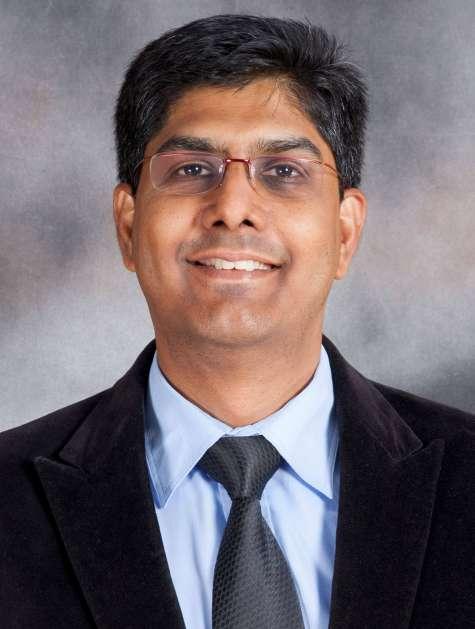
With Maharaj’s leadership and NTT DATA’s proven global capabilities, the company is well positioned to help manfacturers navigate these challenges, accelerate their digital maturity, and strengthen their competitiveness on the world stage.



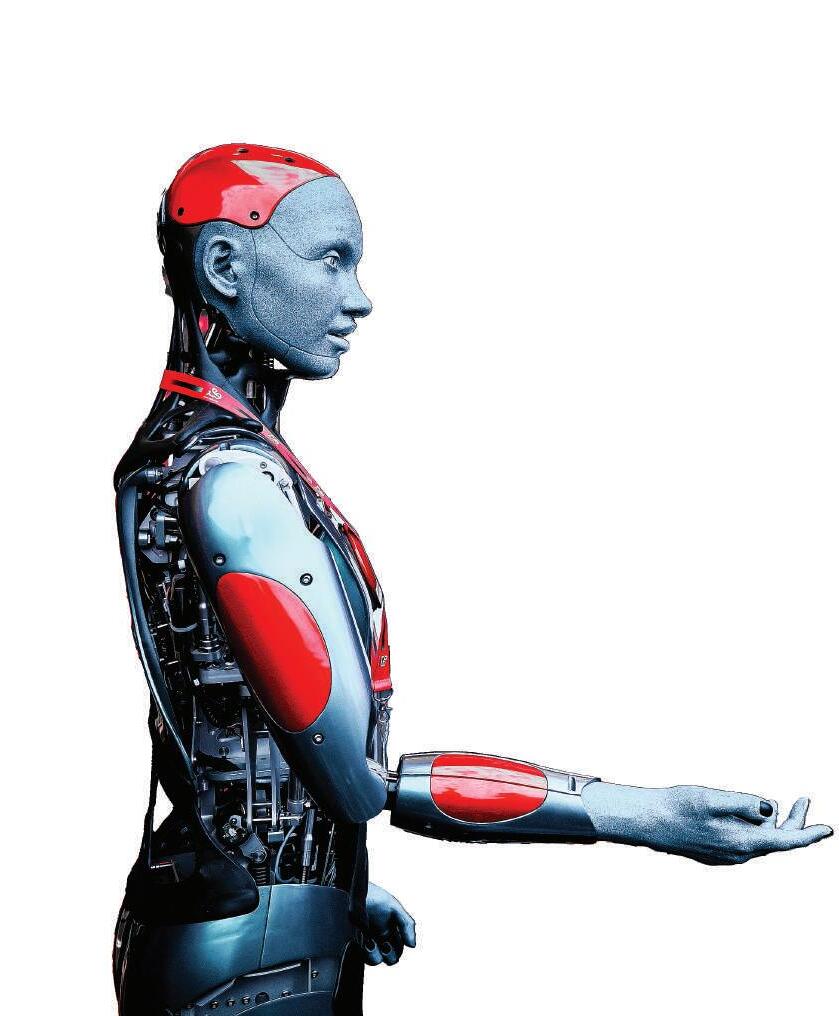
Sujoy Banerjee will spearhead business initiatives in the region with his market-specific knowledge
ManageEngine, a division of Zoho Corporation and a leading provider of enterprise IT management solutions, announced Sujoy Banerjee as its regional business director for the UAE. In his role, Banerjee will oversee the company’s local channel sales and business development initiatives, with specific emphasis on catering to the end-toend IT management requirements of enterprises in the country.
Banerjee’s appointment reinforces ManageEngine’s continued commitment to the region’s technological development. It also coincides with the company’s strategic move to accelerate expansion in the
UAE to strengthen customer and partner engagement. Due to the region’s significant shift to cloud services, ManageEngine’s cloud products saw 50% growth in fiscal year 2024.
“UAE is our second biggest market in the Middle East, and Banerjee’s elevation to head our business here is strategic for our long-term plans for the region,” said Nirmal Kumar Manoharan, regional vice president at ManageEngine. “His expertise in enterprise IT sales combined with his proven leadership across diverse markets makes him the ideal person to drive our growth in the UAE. He will work more closely with our customers and partners, enabling us to deliver faster, more localised support and forge stronger relationships.”
Roles and Responsibilities
Banerjee brings with him over two decades of experience in the IT industry, with almost all of it
THE UAE IS A HUB OF DIGITAL TRANSFORMATION, AND TOGETHER WE WILL ACCELERATE
JOURNEY TOWARD SHAPING
FUTURE OF ENTERPRISE IT.
focused on leading sales and business development at ManageEngine. He has held multiple leadership roles throughout his tenure at the company, including associate director for sales and channel business.
His key priorities will be:
• Empowering partners with resources and training to optimise the channel-based business model.
• Expanding the sales team and investing in local talent to support long-term business objectives.
• Fostering the channel partner ecosystem.
• Driving further innovation and delivering solutions that address the unique challenges and opportunities of this dynamic market.
• Prioritising customer needs with tailored solutions and support.
“I’m honoured to step into this role and excited to collaborate with our exceptional teams and valued partners across the UAE. The UAE is a hub of digital transformation, and together we will accelerate ManageEngine’s journey toward shaping the future of enterprise IT. Our strong foundation empowers us to push boundaries and achieve new milestones. Every challenge we face is an opportunity to redefine what’s next for our customers and the industry at large,” said Banerjee.
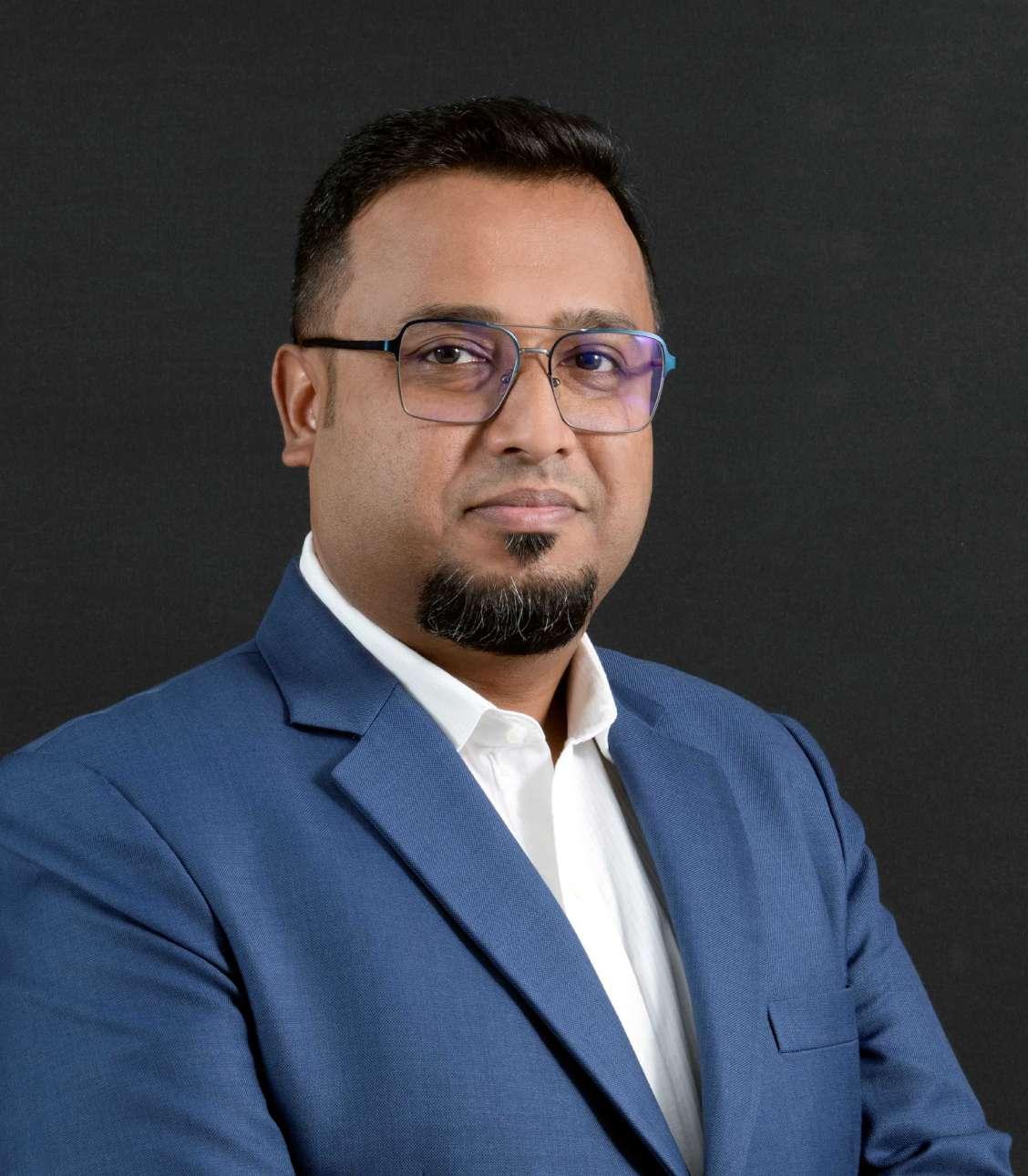
Sujoy Banerjee, Regional Business Director for the UAE at ManageEngine.
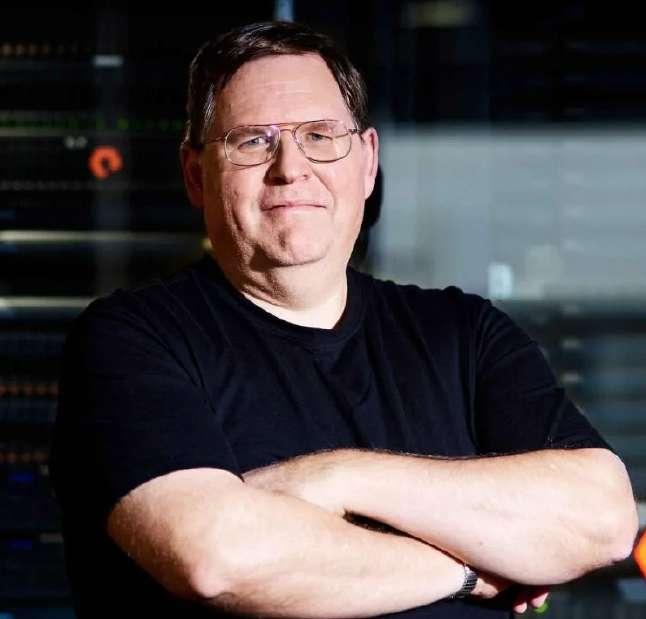
The storage pioneer unveils advanced innovations across FlashArray and FlashBlade, delivering unmatched performance, scalability, and unified architecture for evolving enterprise demands.
Pure Storage has announced the expansion of its next-generation storage portfolio, delivering powerful innovations to support the world’s most demanding, high-performance workloads. Designed to meet modern data challenges, the latest offerings aim to redefine what’s possible in storage infrastructure, offering enterprise customers greater performance, flexibility, and scalability.
“In an era where data is king and IT
complexity remains a major hurdle to accessing and using data for optimal business value, Pure Storage is once again redefining what’s possible for customers,” said John Colgrove (Coz), Founder and Chief Visionary at Pure Storage. “We deliver the magic by rejecting the outdated norms of storage infrastructure that hinder innovation and insight in today’s data-driven landscape.”
The company highlights the increasing need for a radical shift in
storage strategies, driven by explosive data growth and fragmented IT environments. Traditional storage architectures often lead to silos and inefficiencies. In response, Pure Storage is advancing its Enterprise Data Cloud (EDC) vision—a virtualised data layer that spans on-premises, hybrid, and cloud environments, ensuring seamless control and performance at scale.
At the core of this expansion are significant updates to Pure Storage’s FlashArray and FlashBlade platforms. These technologies form a unified foundation, delivering high reliability, ultra-low latency, and exceptional throughput for diverse workloads.
Among the highlights is the new FlashArray//XL R5, which doubles the IOPS per rack unit and increases raw capacity by up to 50 percent compared to its predecessor—making it ideal for workload consolidation at extreme scale.
Also launched is FlashArray// ST, purpose-built for ultra-latencysensitive workloads such as large OLTP systems, real-time analytics, and high-throughput NoSQL databases. It delivers over 10 million IOPS per five rack units, setting a new benchmark in performance.
Meanwhile, FlashBlade//S R2 introduces next-generation controller blades, enabling up to 30% better performance for demanding data pipelines like AI, genome sequencing, and design automation workloads.
Significantly, Pure Storage has now integrated block, file, and object support into a single architecture via FlashArray, enabling customers to manage all data types through one unified platform and experience—an industry first that simplifies data management and boosts agility.
“Pure Storage was born to disrupt the industry,” said Colgrove. “We are unwavering in our mission to enable our customers’ ambitions by providing the most innovative and reliable foundation to meet any future challenge or opportunity with confidence.”
With this latest expansion, Pure Storage continues to set the pace for data infrastructure transformation, empowering enterprises to unlock faster insights, improved efficiency, and sustainable growth.





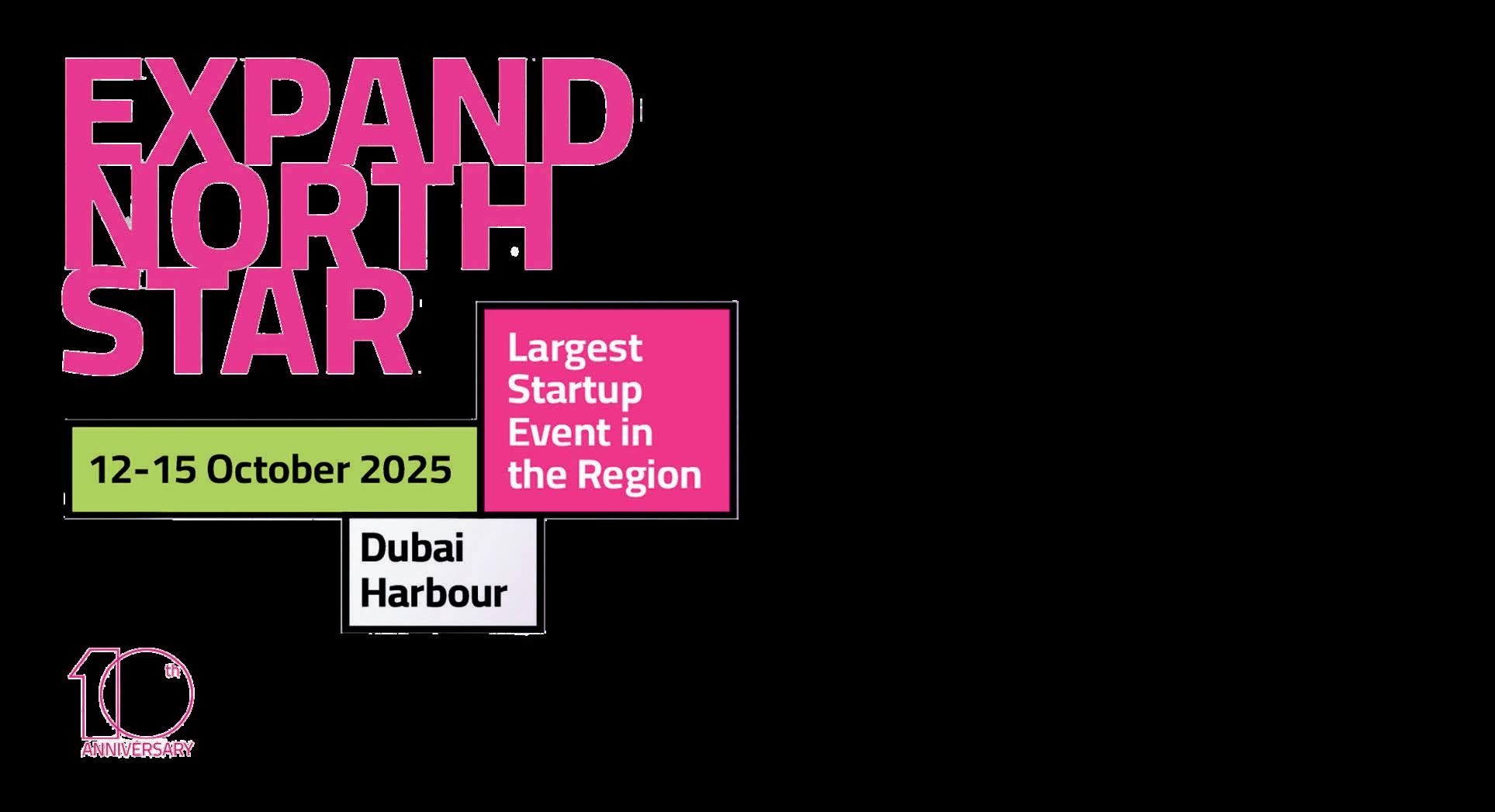

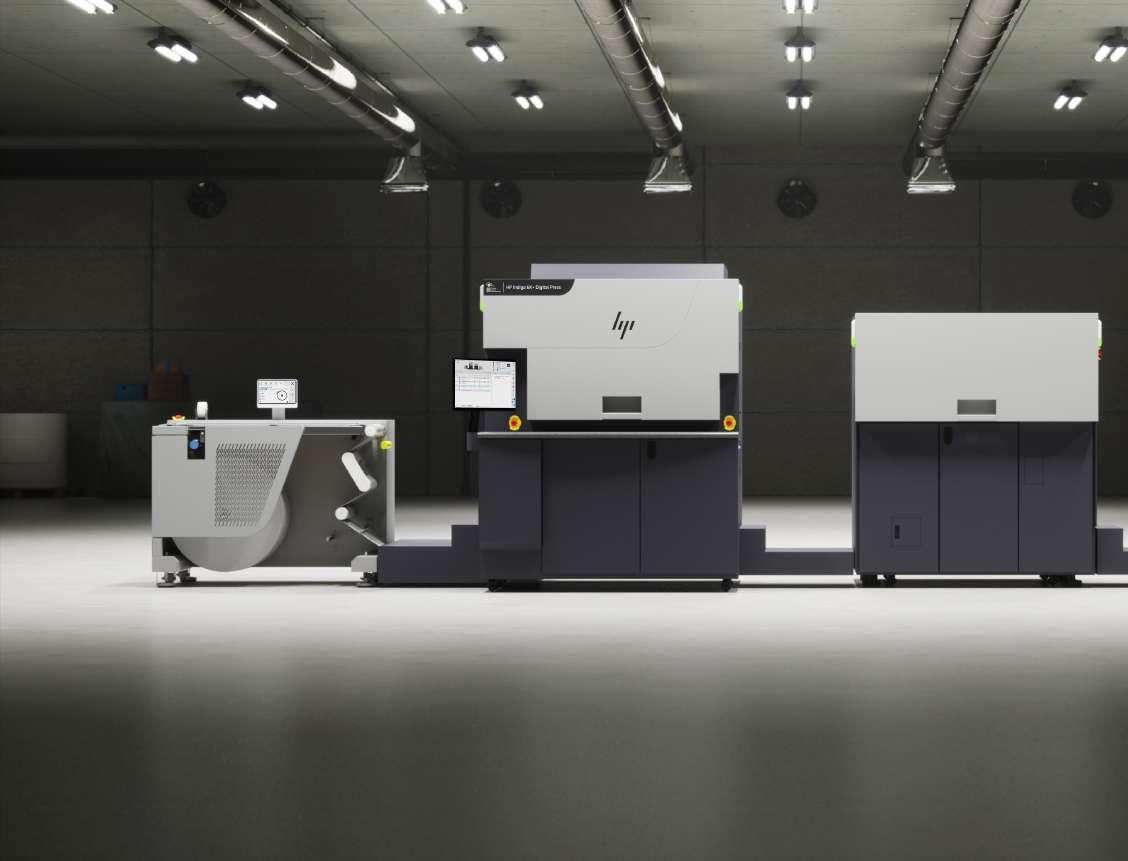
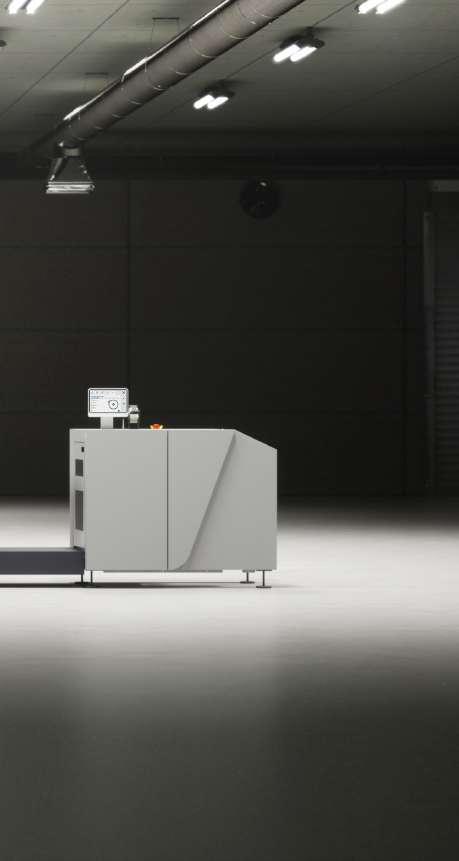
HP has introduced the HP Indigo 6K+ Digital Press, the latest addition to its marketleading label press portfolio, engineered to maximise operational efficiency and reliability while offering unmatched versatility for digital label production.
Based on the trusted HP Indigo 6K platform, with over 2,300 global installations to date, the new 6K+ model incorporates intelligent automation and AI-powered tools to empower converters to scale with confidence. Operated by the new SmartControlSystem, the press is designed to meet the
WITH INTELLIGENT AUTOMATION, EMBEDDED AI, ADVANCED DIAGNOSTICS, AND A PROVEN DIGITAL PLATFORM AT ITS CORE, THE HP INDIGO 6K+ OPENS UP INFINITE
OPPORTUNITIES FOR GROWTH.
demands of high-mix, short-tomedium volume production with improved diagnostics, uptime, and performance.
“As we advance HP Indigo’s vision of Nonstop Digital Printing, we are proud to introduce the new HP Indigo 6K+ Digital Press, featuring the groundbreaking SmartControlSystem for enhanced robustness and nonstop production,” said Noam Zilbershtain, Vice President & General Manager, HP Indigo. “This press is designed to help converters confidently say ‘yes’ to any label job today and in the future.”
The HP Indigo 6K+ features real-time insights, intuitive troubleshooting, and automated colour management through innovations such as HP PrintOS Suite, Automatic Alert Agent 2.0, Spot Master, and HP Nio. These enhancements enable faster setup, greater uptime, and reduced waste, addressing the growing labour and training gaps in the industry.
Jordan Fischer, Plant Manager at Summit Labels, one of the first beta customers, shared: “With the new SmartControlSystem, we are able to maximise our productivity by delivering up to 15% increased uptime. The reliability and scaling of the HP Indigo 6K+ have impressed us, allowing us to handle more jobs per shift efficiently.”
Tom Schouten, Production Manager at Geostick, also praised the innovation: “We’re now experiencing even greater image stability and advancements in troubleshooting that have streamlined maintenance and reduced downtime.”
Designed for converters seeking to broaden their application portfolio, the press supports a wide substrate range and complex applications such as smart labels, in-mold labels (IML), laminated tubes, and shrink sleeves. Its seven ink stations and broad colour gamut coverage—up to 97%— ensure vibrant, high-impact printing across all jobs.
Beyond performance, the HP Indigo 6K+ brings sustainability to the forefront. With shorter job setups and reduced media-related CO ₂ emissions by up to 20%, it supports recycled and renewable substrates. The next-gen supplies also minimise press downtime and waste, helping converters align with business and regulatory sustainability goals.
The HP Indigo 6K+ will be available globally by the end of July 2025. Attendees at Labelexpo Europe 2025 in Barcelona can experience live demonstrations at booths #E25 and #D21 in Hall 5, alongside other flagship presses like the HP Indigo V12, showcasing HP’s AIpowered, end-to-end digital printing innovations.
Stylish, space-saving powerhouse made for small businesses
ASUS announced the ExpertCenter P400 AiO (P440VA), an all-in-one solution that combines performance and style in a compact design. It features a 24-inch FHD touchscreen1 display with 100% sRGB color gamut and a 93% screen-tobody ratio. Combined with immersive Dolby® Atmos audio, it provides a premium experience for multimedia tasks.
ExpertCenter P400 AiO also integrates ASUS AI ExpertMeet to enhance videoconferencing experiences, adding value for businesses that rely on virtual collaboration. Its VESA1-mount compatibility and sleek form factor offer flexibility in any modern workspace, while business-grade security with ASUS ExpertGuardian and connectivity features ensure reliability in SMB environments.
Designed with a sleeker profile, the ExpertCenter P400 AiO is 25% thinner2 than previous generations, making this ASUS’ most compact all-in-one PC. It also includes a comprehensive lineup of ports, including an optional HDMI®-in port that allows users to connect their laptop for a bigger screen experience. Moreover, the height-adjustable stand (HAS)1 on the ASUS ExpertCenter P400 AiO offers tilt, swivel, and height adjustments, providing perfect viewing angles whether sitting or standing.
Class-leading performance
ASUS ExpertCenter P400 AiO is built
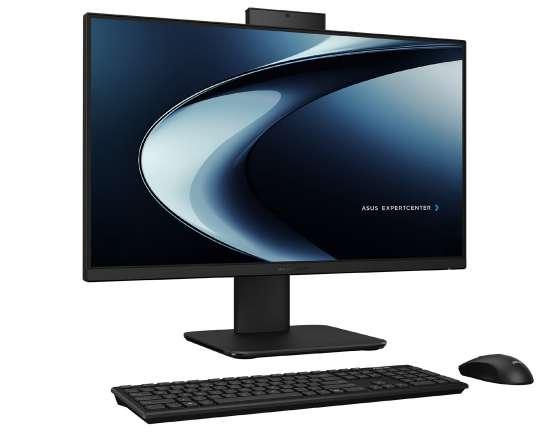
to power through any task and offers streamlined management to reduce admin workload. Powered by up to an Intel® Core™ i7 processor, along with up to 64 GB DDR5 memory and up to 2 TB SSD, ExpertCenter P400 AiO delivers exceptional processing power. Businesses can experience lightningfast connectivity on the ExpertCenter P400 AiO with Wi-Fi 73 that delivers speeds of up to 3x faster than Wi-Fi 6.
Productivity enhanced by AI
ASUS ExpertCenter P400 AiO has been engineered to take advantage of the latest AI tools. This includes ASUS AI ExpertMeet, which helps elevate the meeting experience, optimizing calls with AI noise-canceling audio and AI camera. AI Meeting Minutes automatically transcribes meetings by turning audio into text, making it easy to review later. It can summarize key points of the meeting, as well as identify multiple speakers. Moreover, users can supercharge their productivity with Microsoft Copilot5
KEY POINTS
Peak Performance: Powered by up to Intel® Core™ i7 processor and ultra-fast Wi-Fi 7.
Display of Brilliance: A 24-inch FHD touchscreen with edge-to-edge slim-bezel design and an impressive 93% screen-to-body ratio.
Retractable Camera: An intuitive push-and-pull design that hides the camera when not in use for an added layer of security.
with commercial data protection. Featuring a dedicated key, one click means endless exploration, achieving more with less time and effort.
ASUS ExpertCenter P400 AiO features a 24-inch FHD edge-to-edge slim-bezel design with an impressive 93% screento-body ratio. Offering 178° viewing angles and a 100% sRGB color gamut for vivid, lifelike colors, the screen also has anti-glare properties, TÜV Rheinland certification for low bluelight emissions to ensure optimal eye comfort under extended use.
A retractable camera is included, which can be accessed by an intuitive push-and-pull design. This hides the camera completely when not in use and ensures that users know when the camera is active, giving an added layer of security and peace of mind.
With robust security features, ASUS ExpertCenter P400 AiO shields personal data with multiple ASUS ExpertGuardian protections. This includes a commercialgrade and NIST SP 800-155 compliant BIOS with 5 years of ASUS BIOS and driver update support, plus an integrated biometric login with FIDO authentication that safeguards critical data from software, firmware and hardware.
ExpertCenter P400 AiO also includes a complimentary one-year McAfee+ Premium membership to help protect businesses against evolving threats. ASUS ExpertCenter P400 AiO is now available across the GCC.



From the internet to endpoints, AI is at the core of Cyble’s ecosystem.



